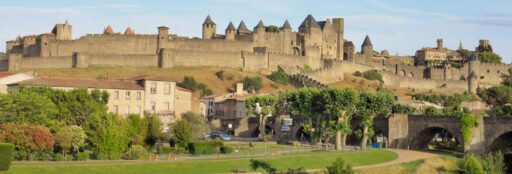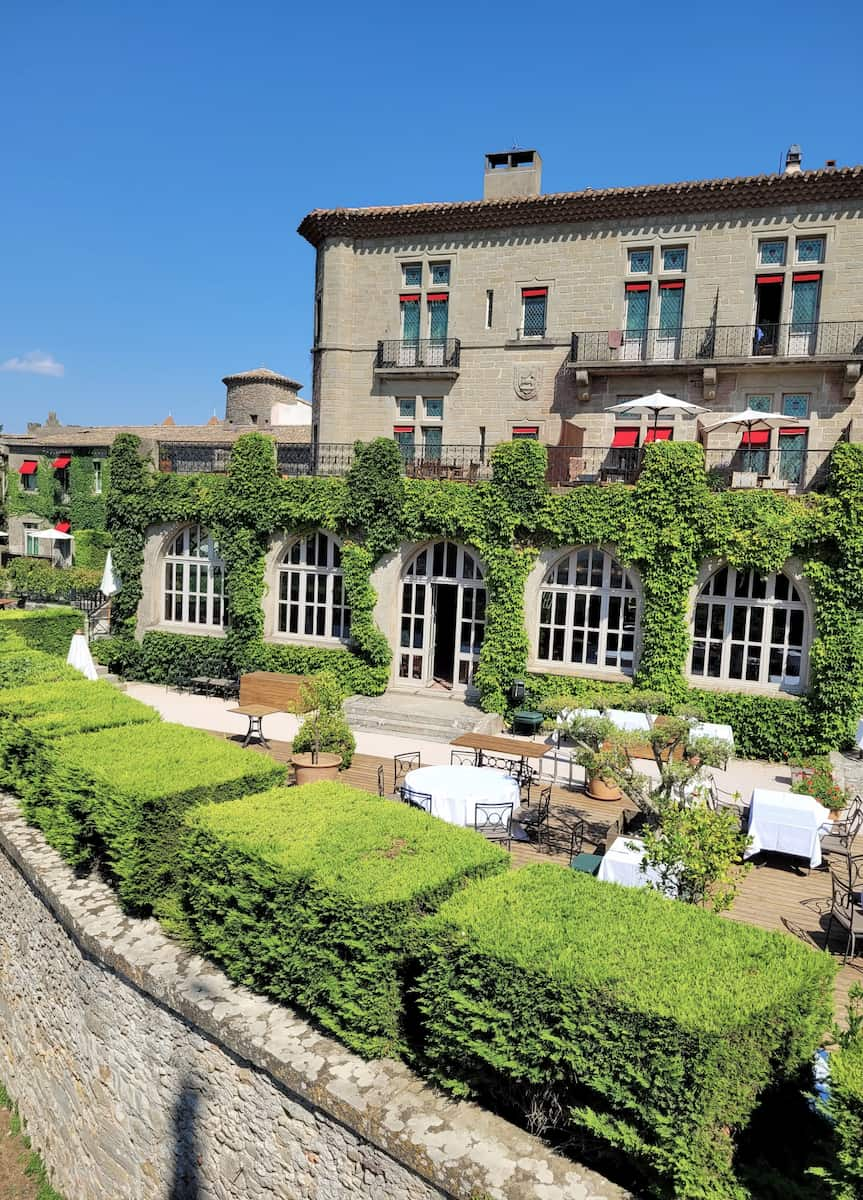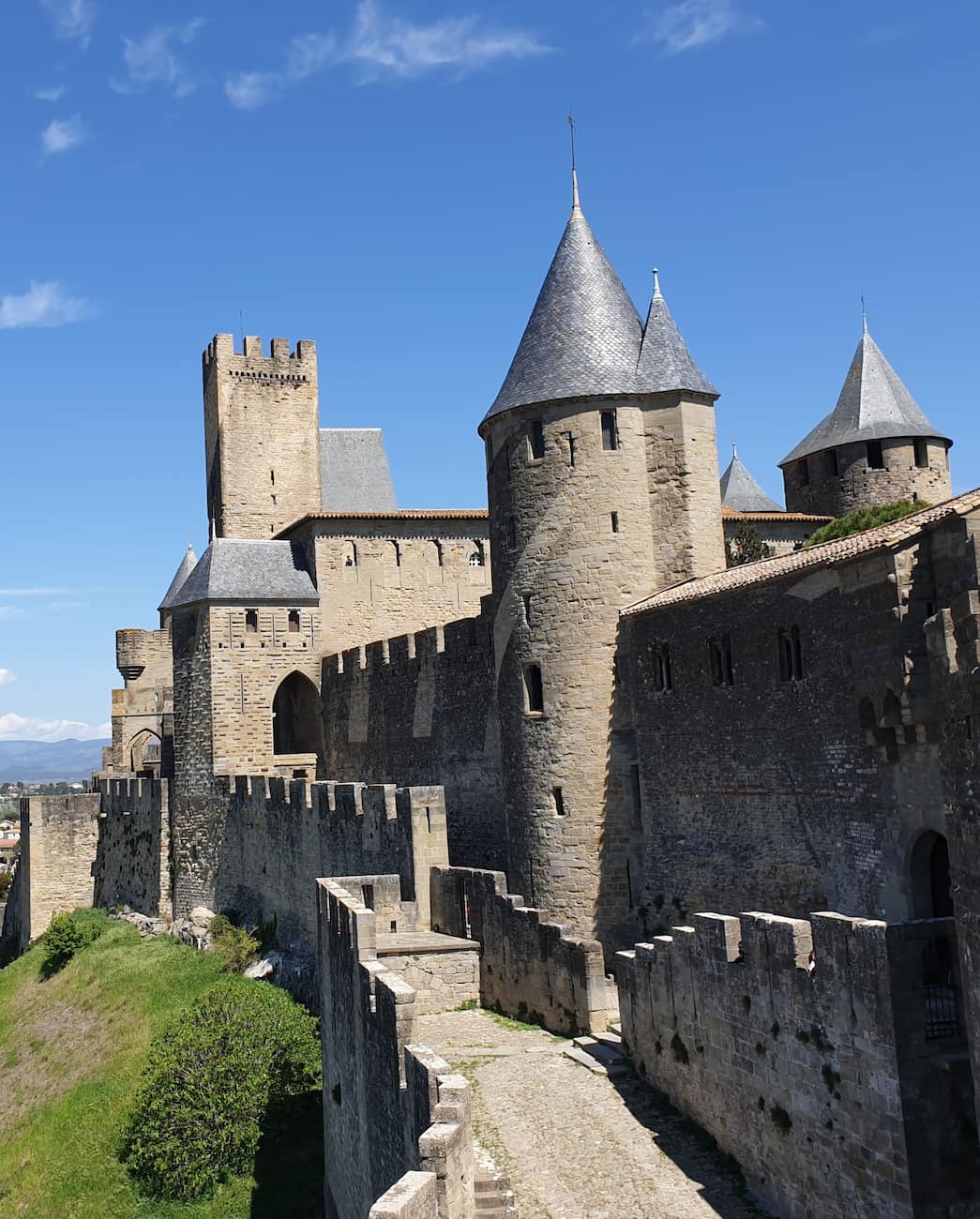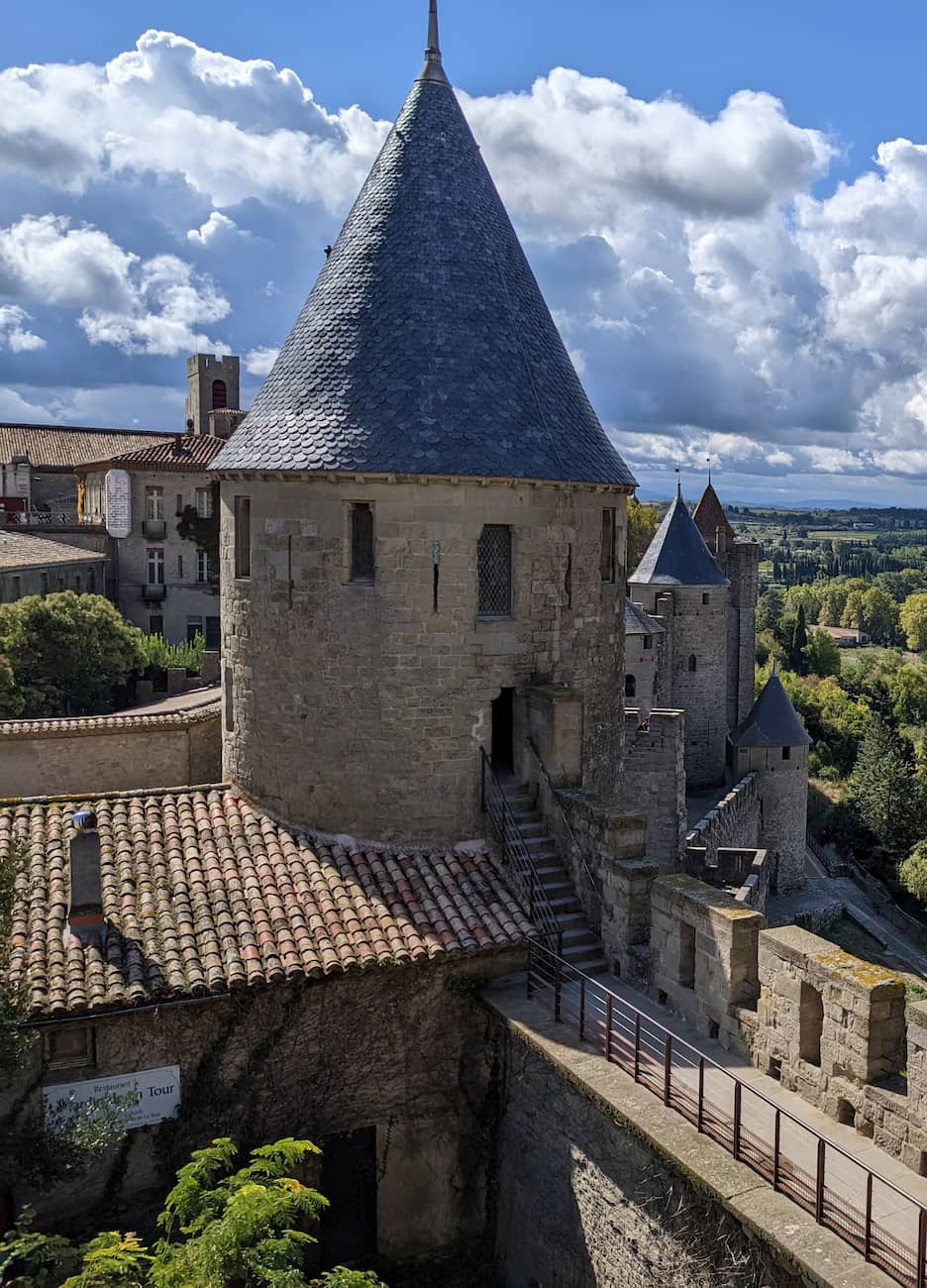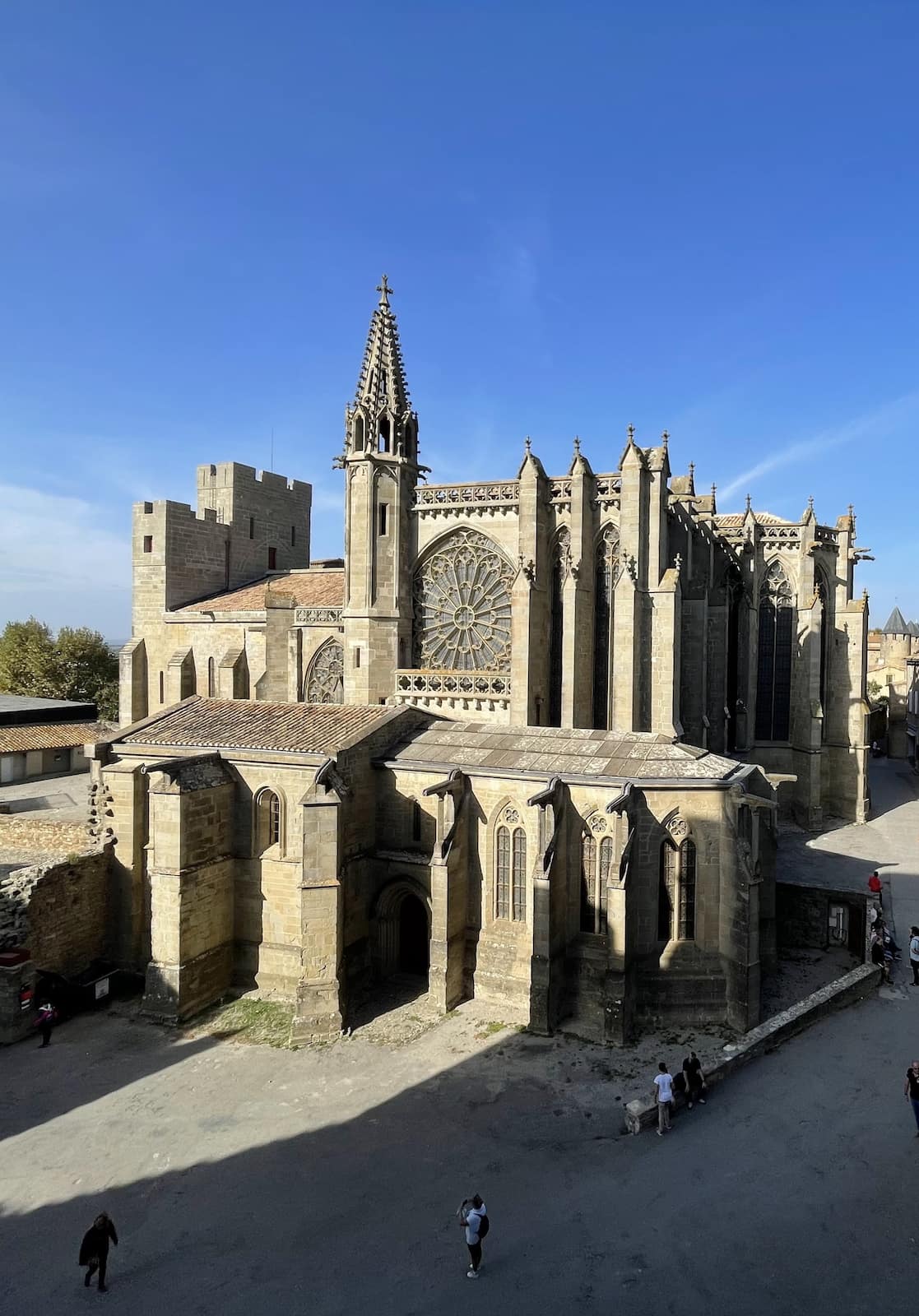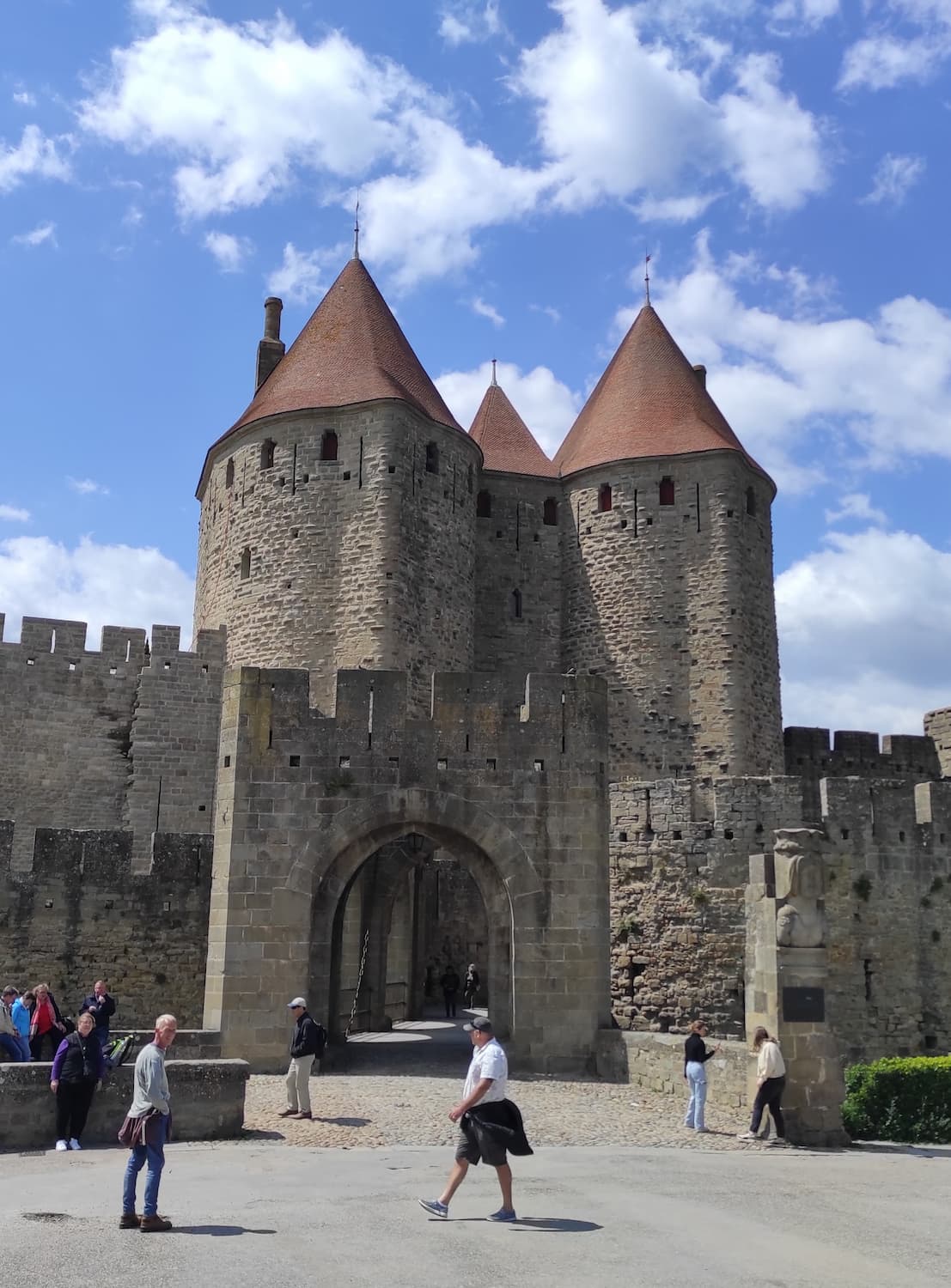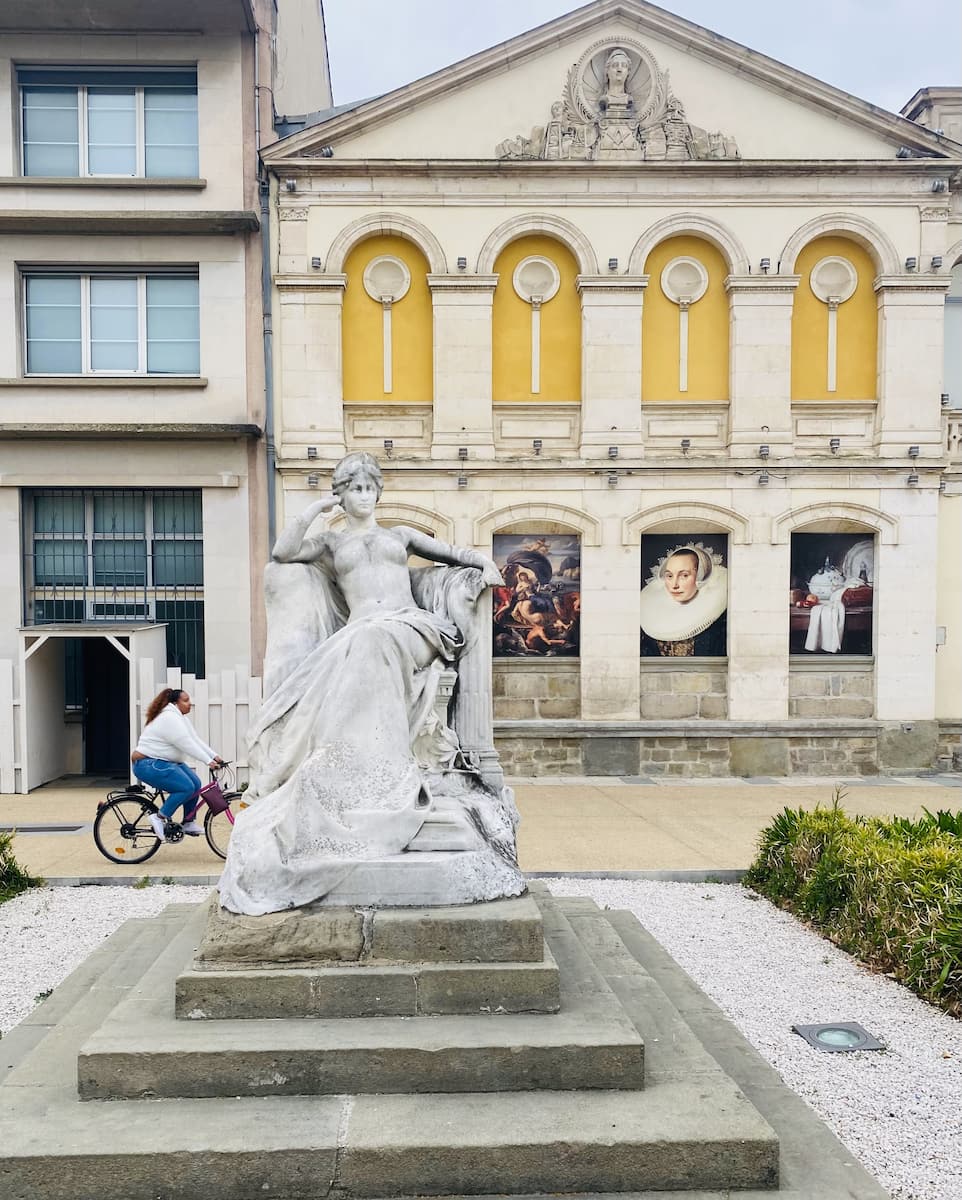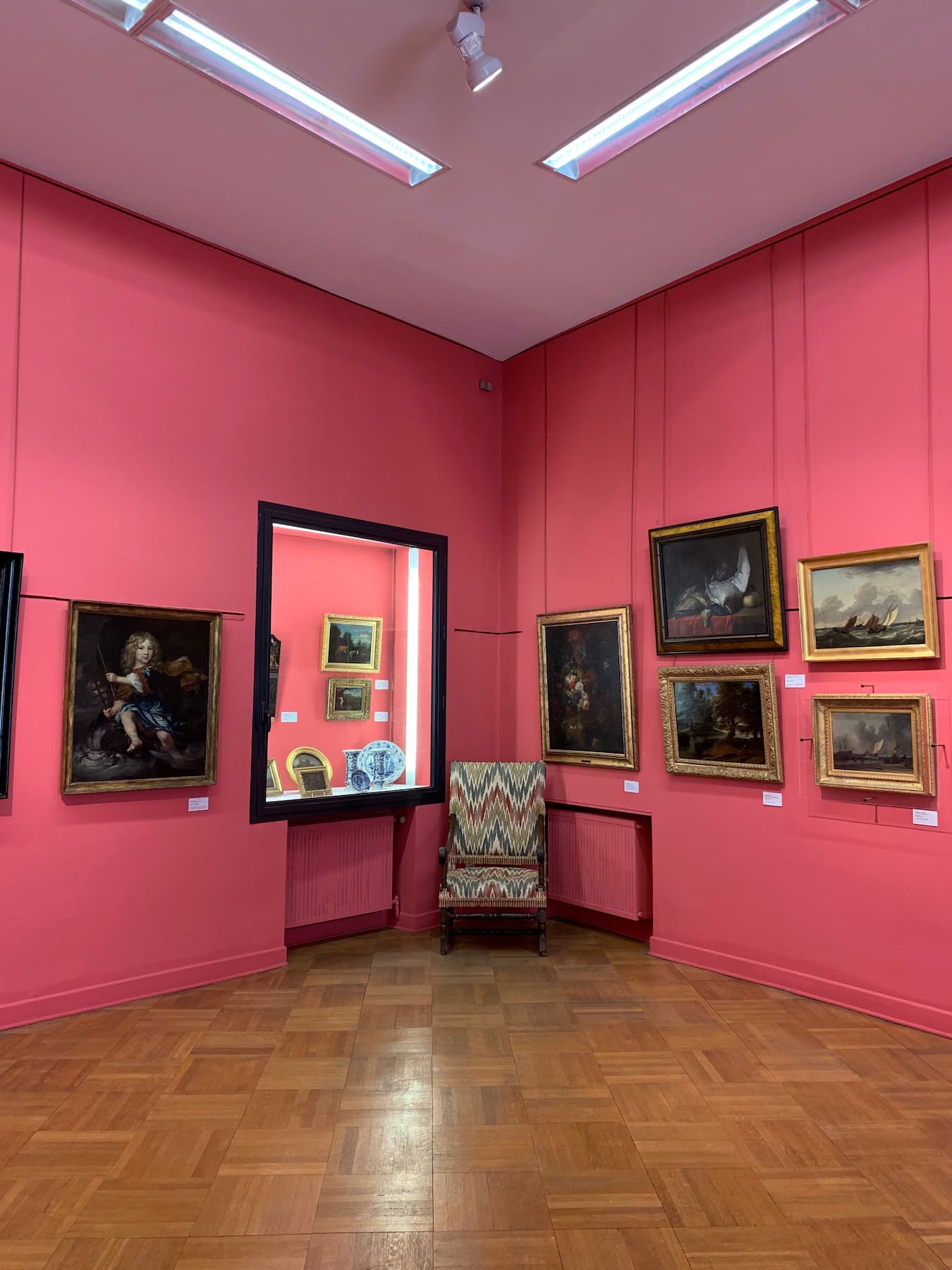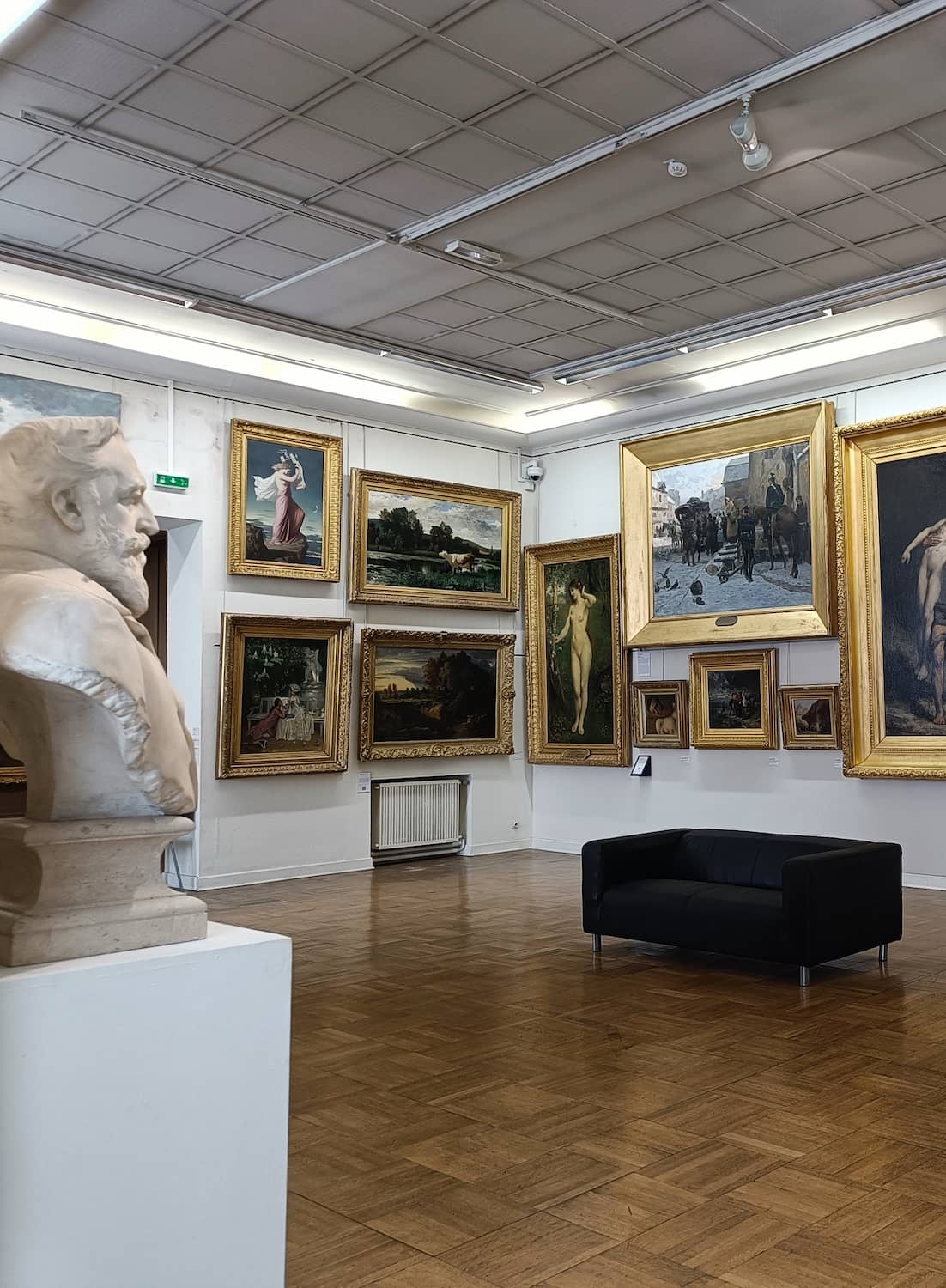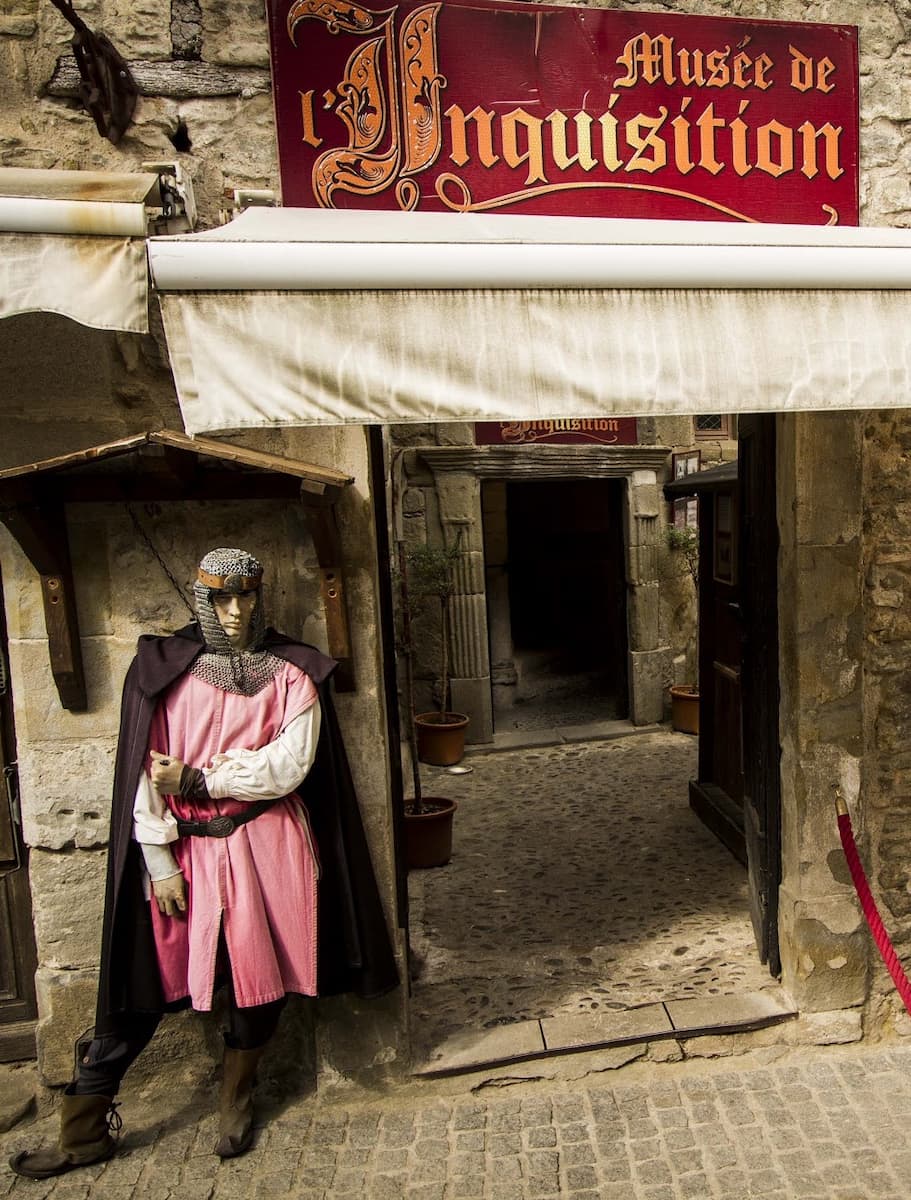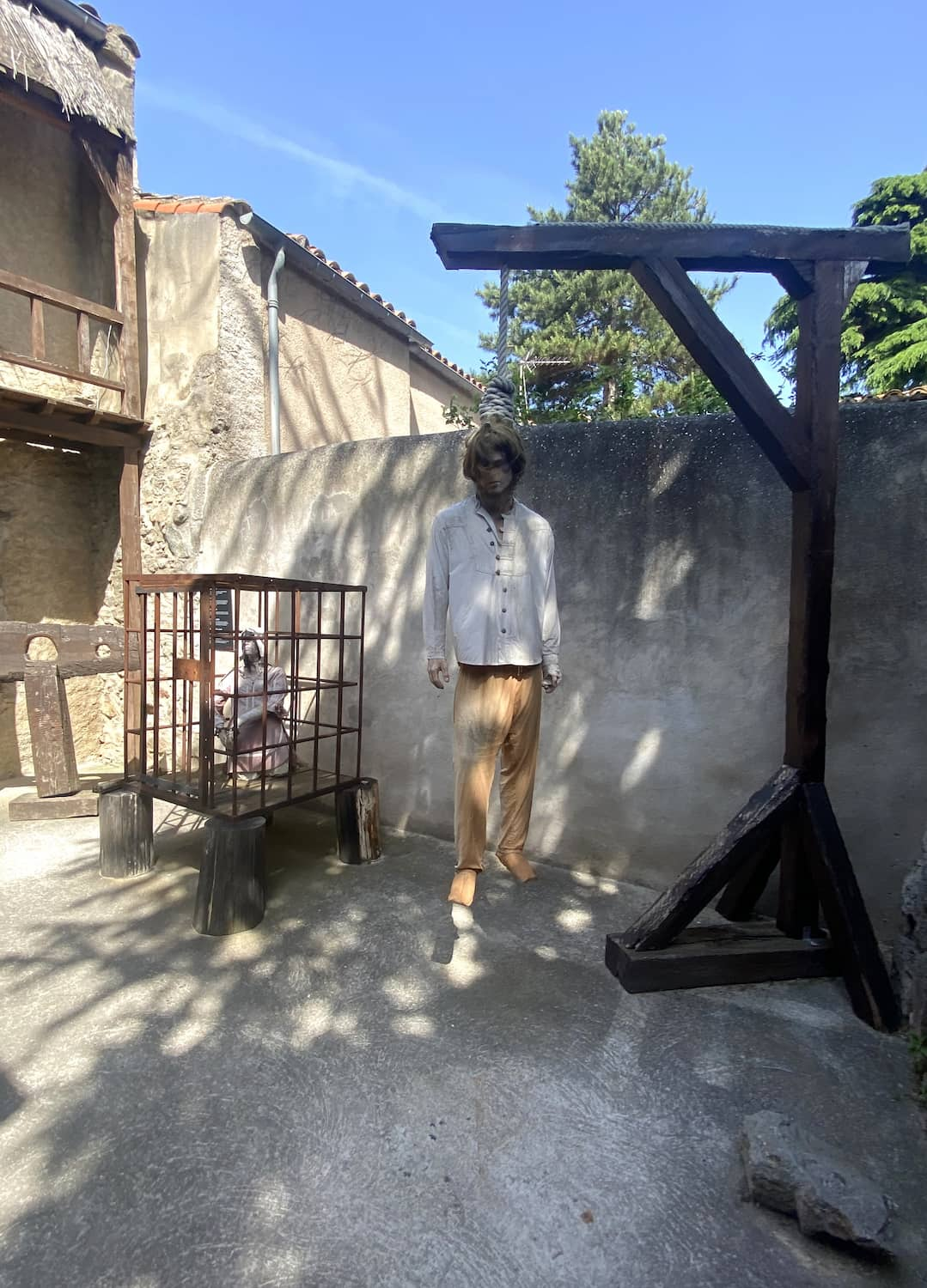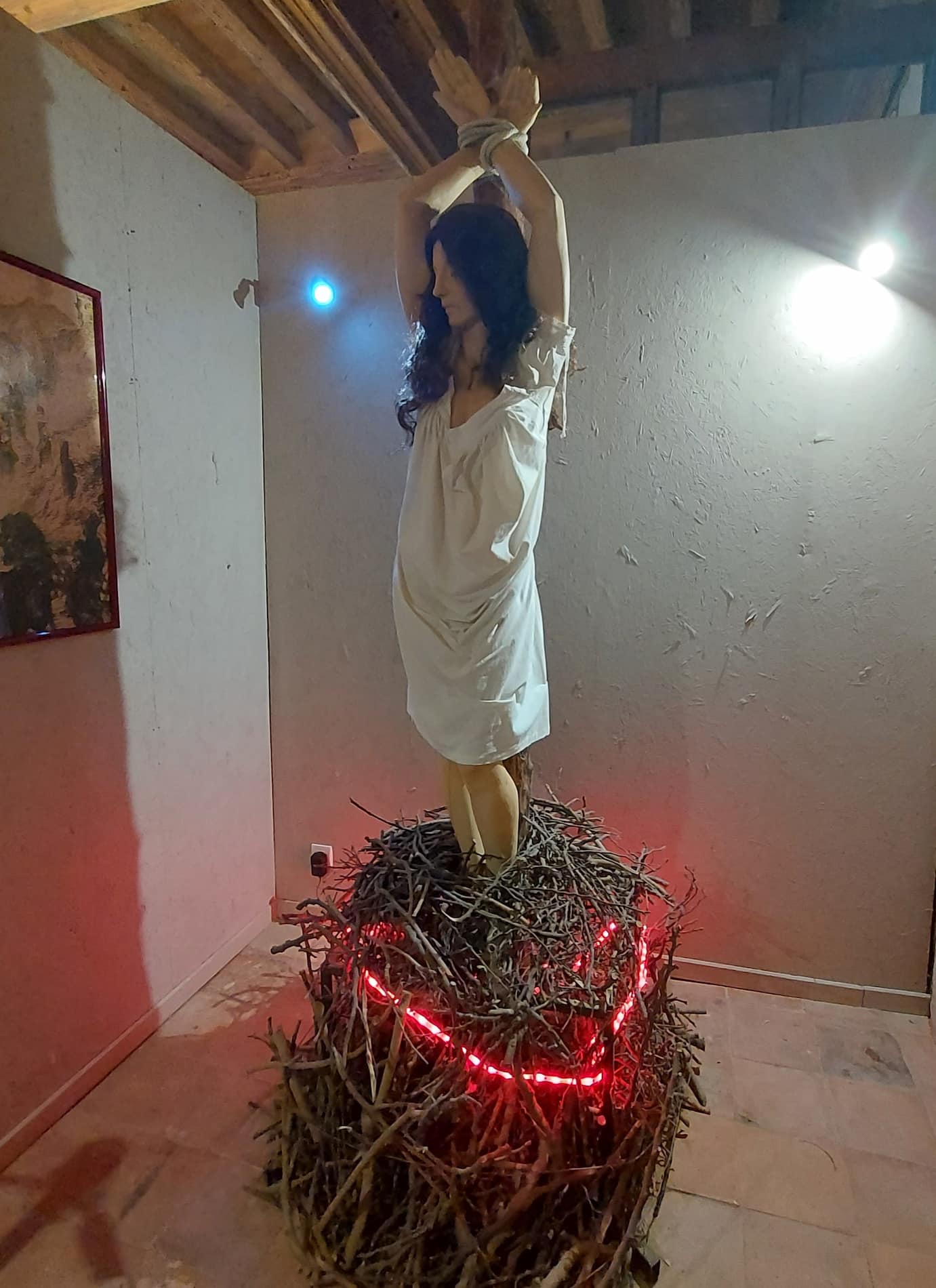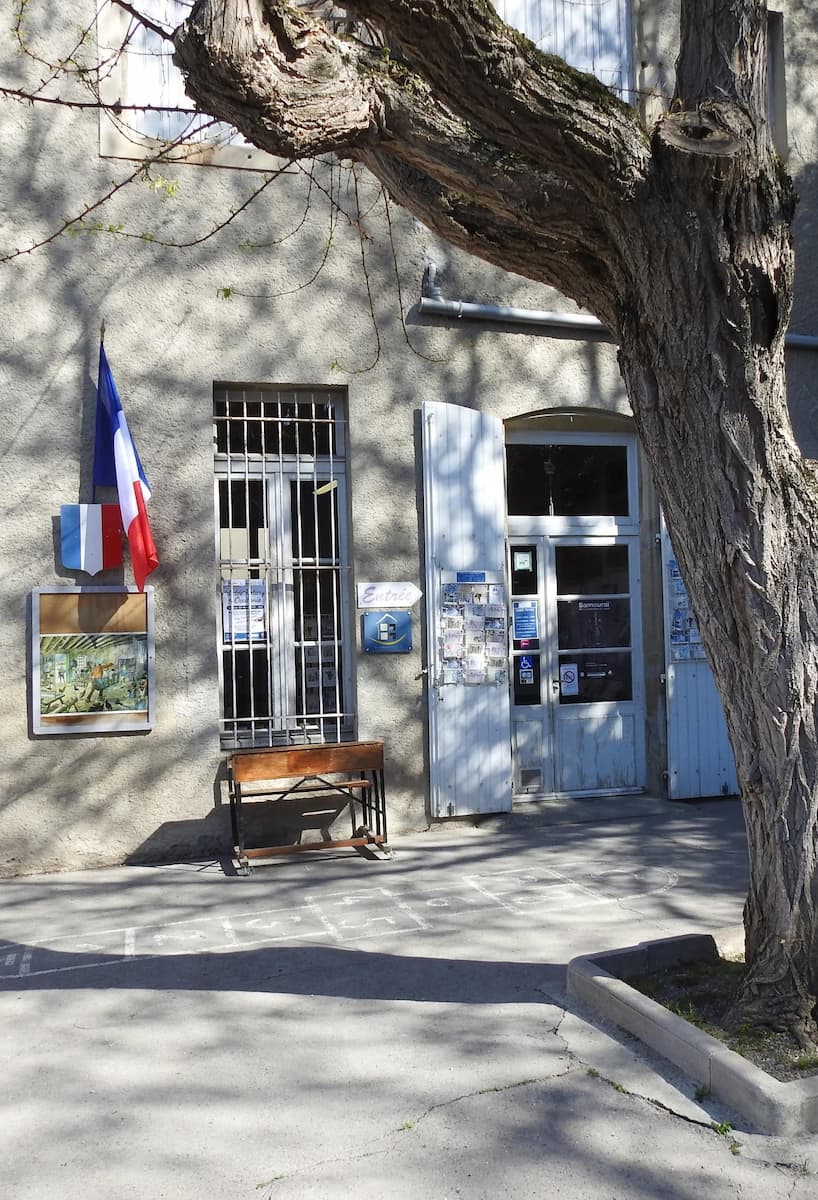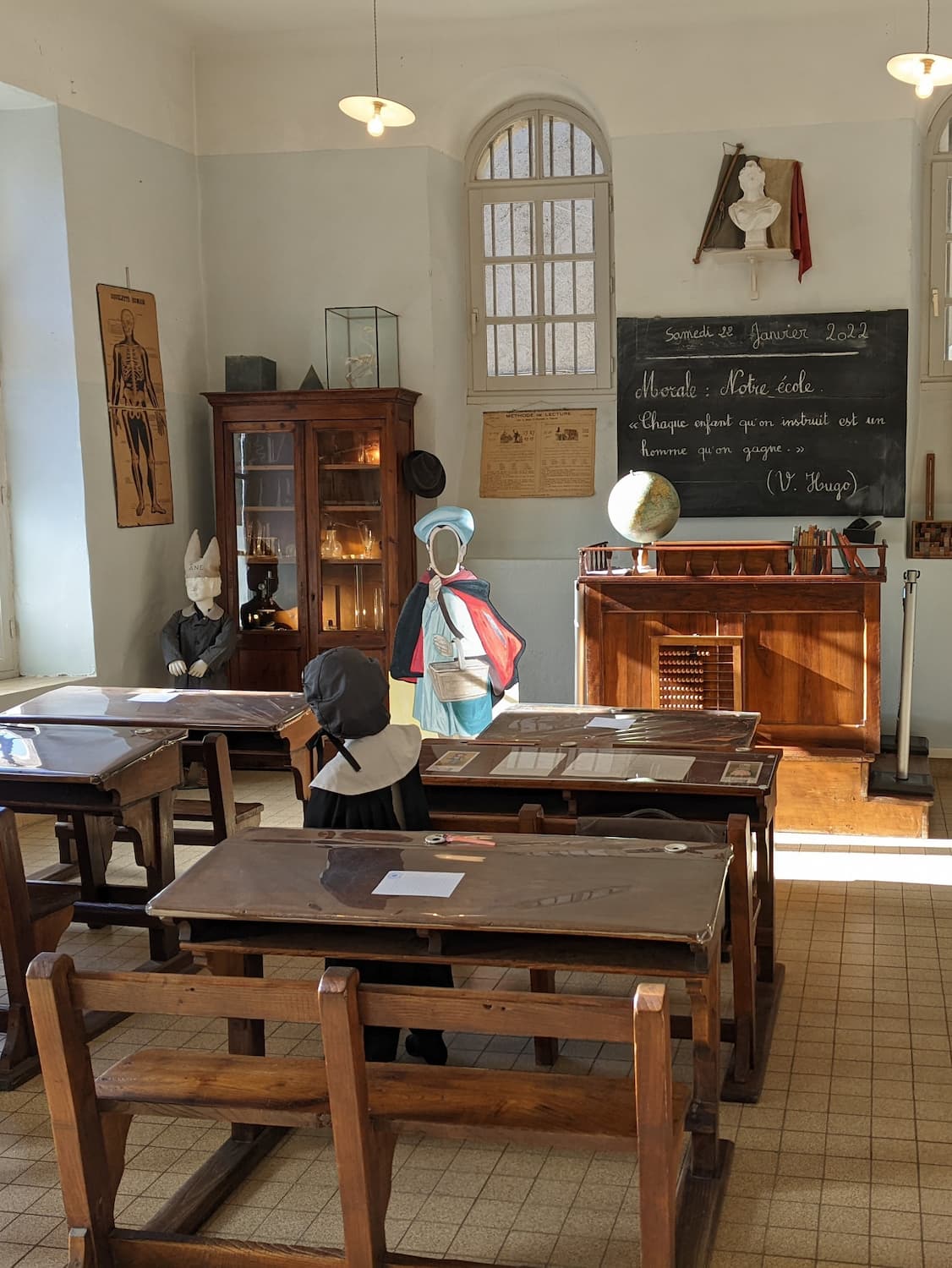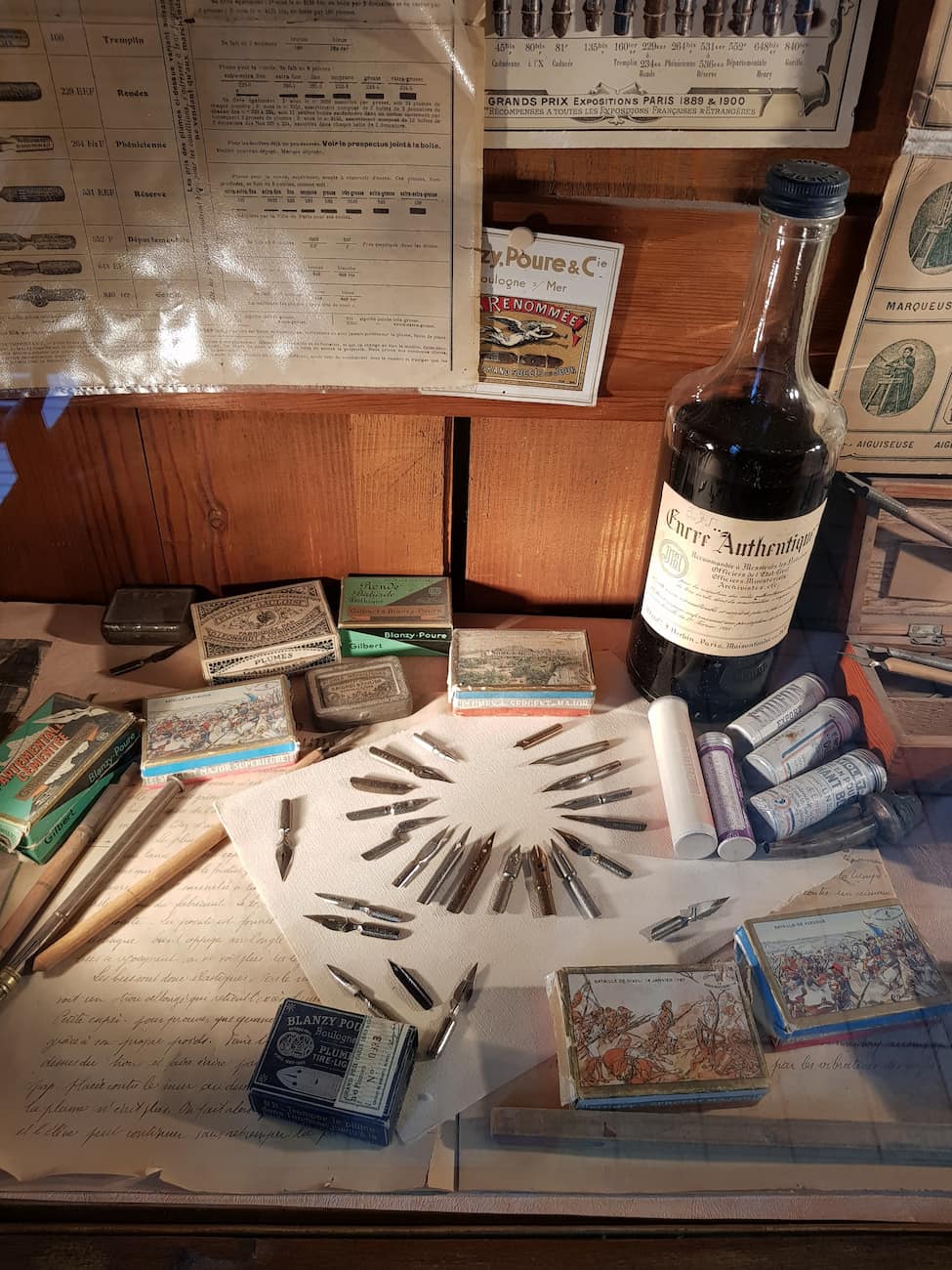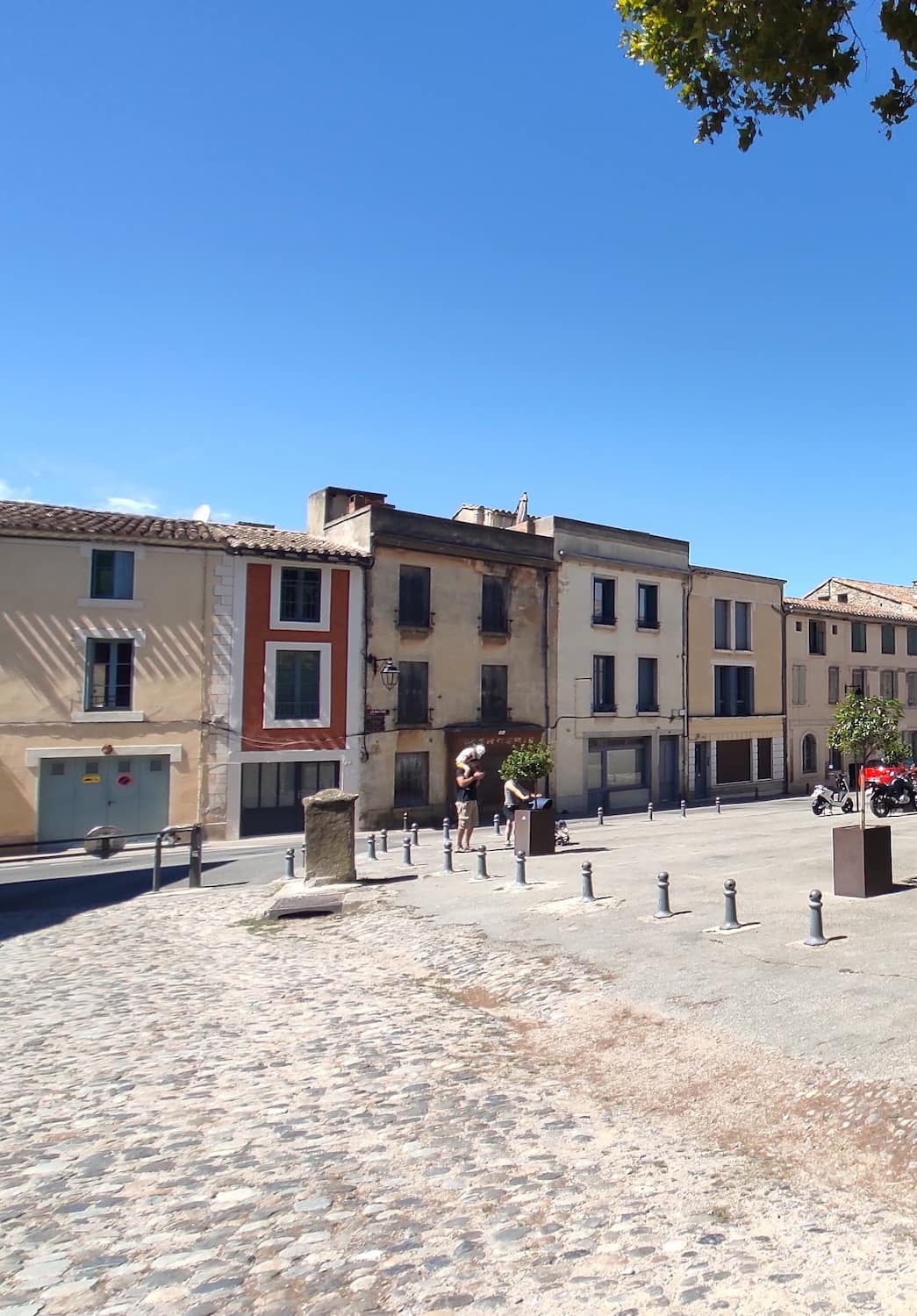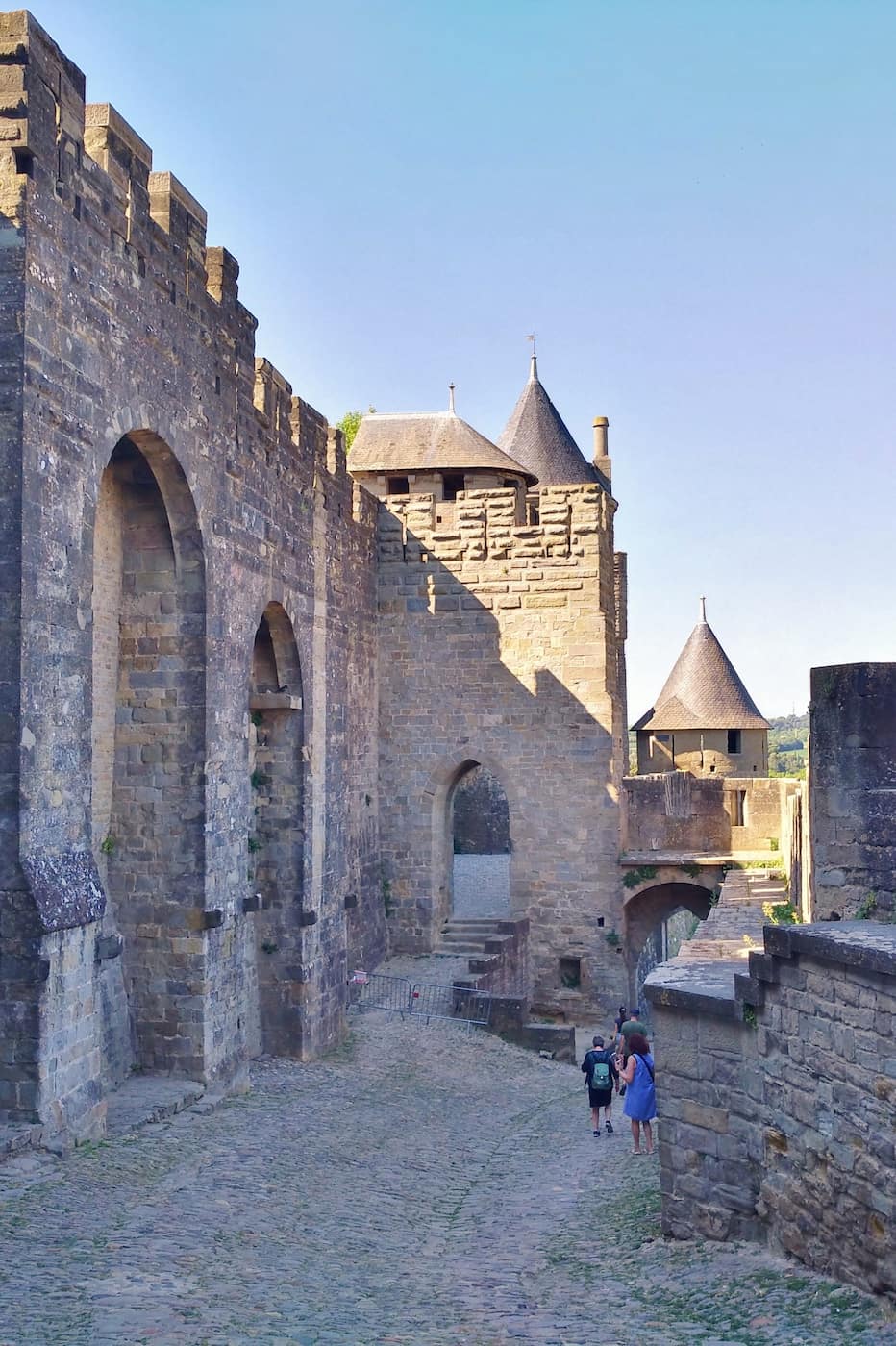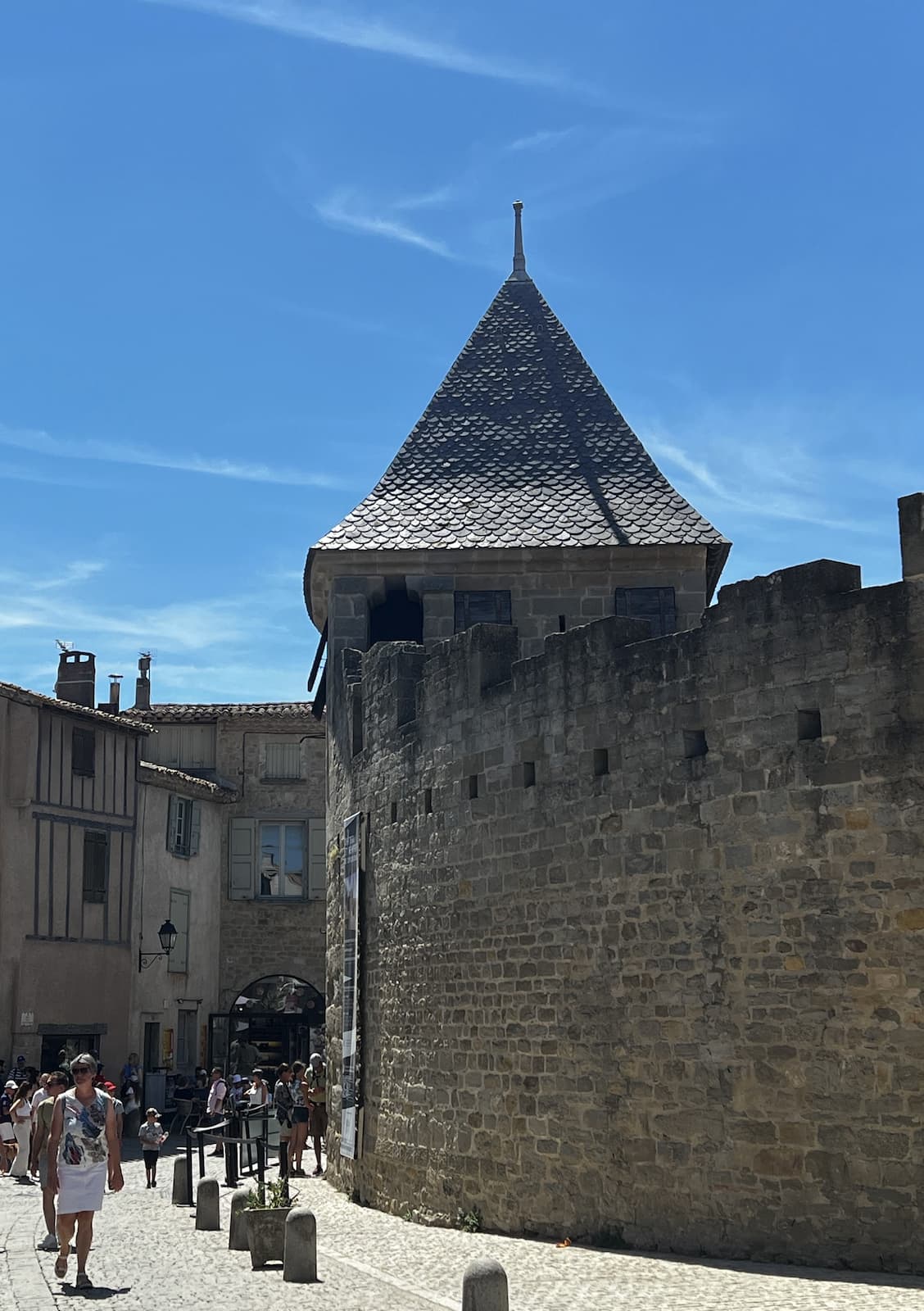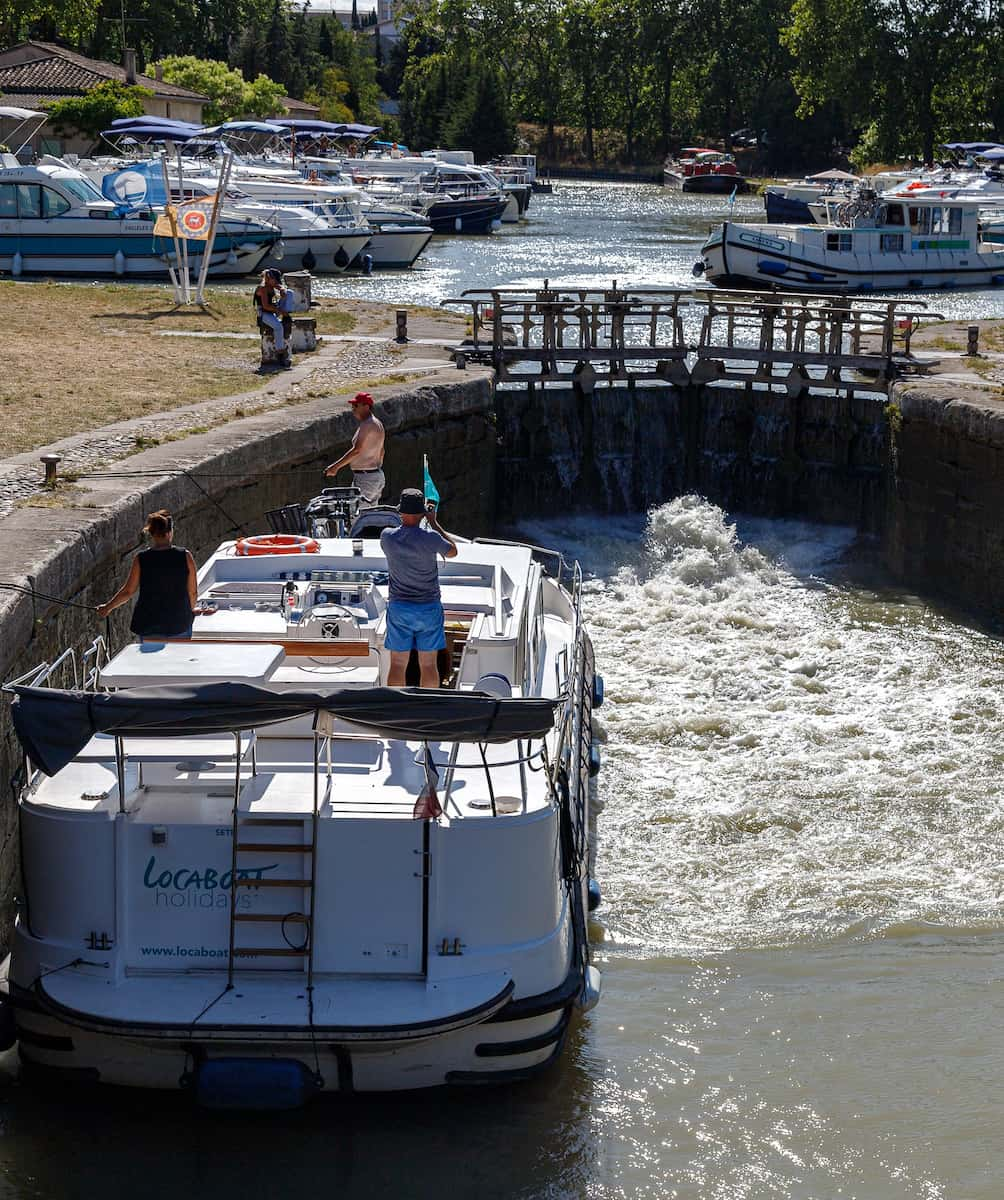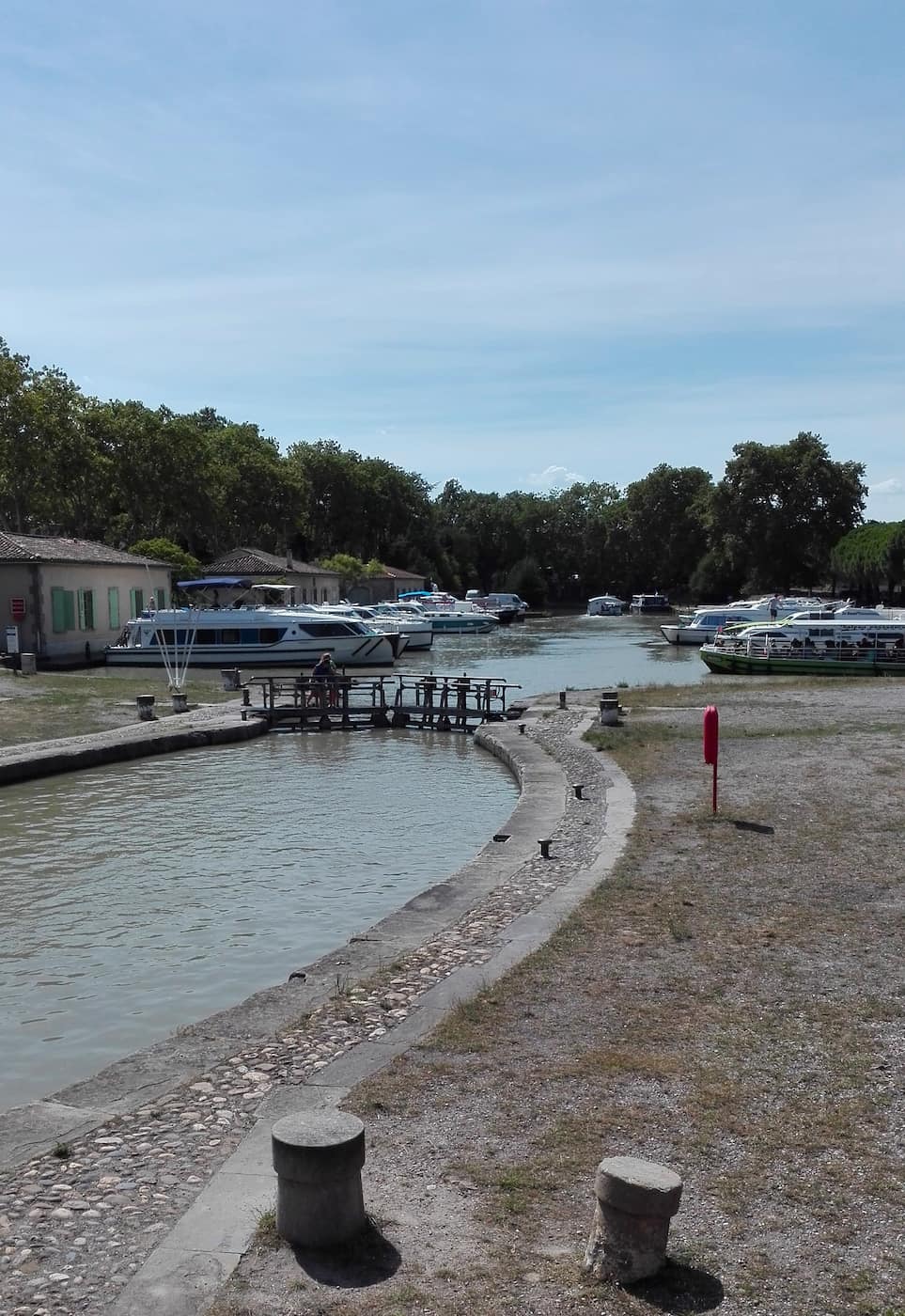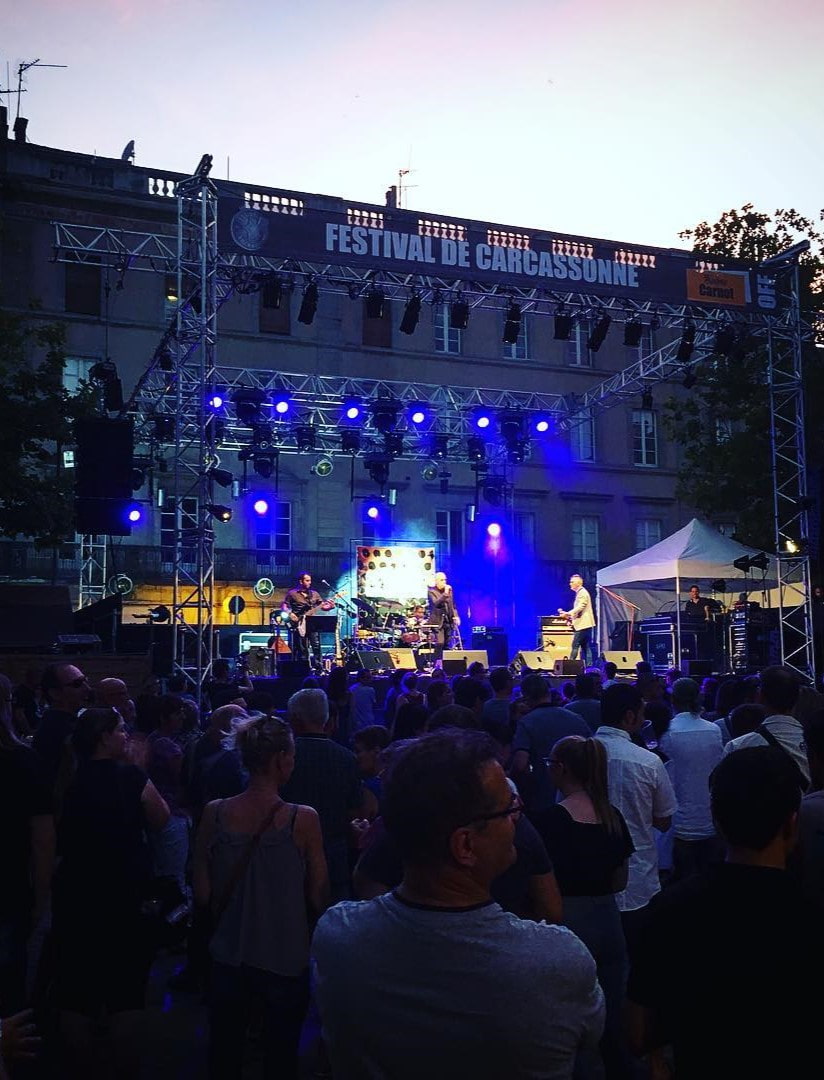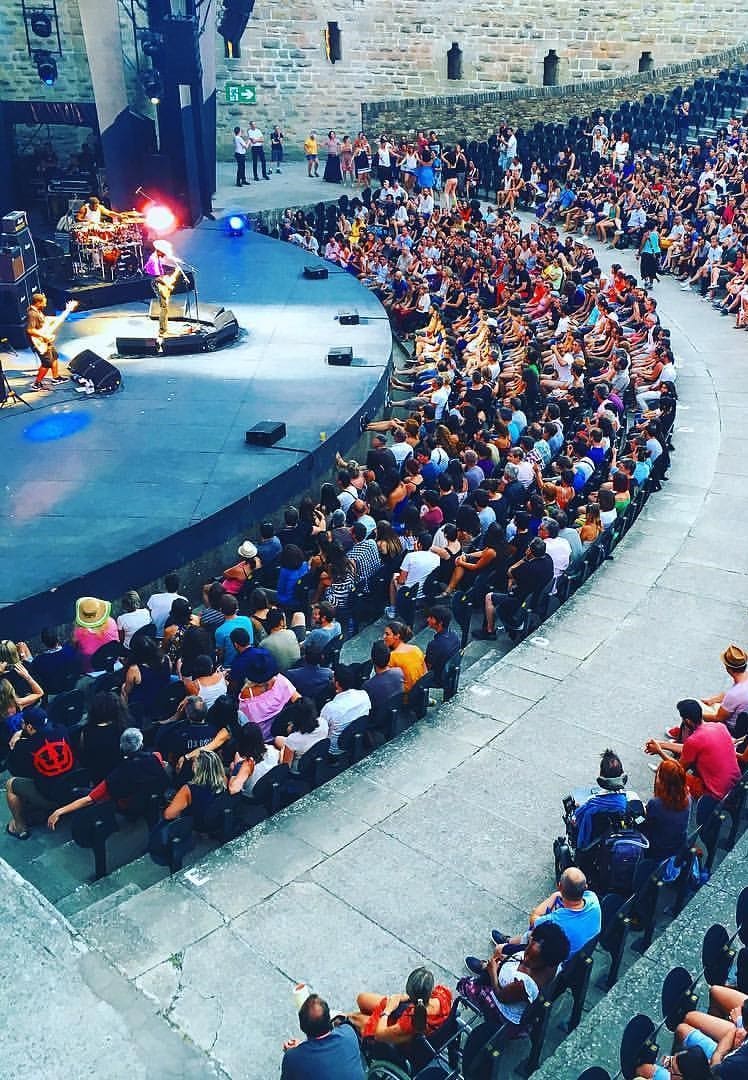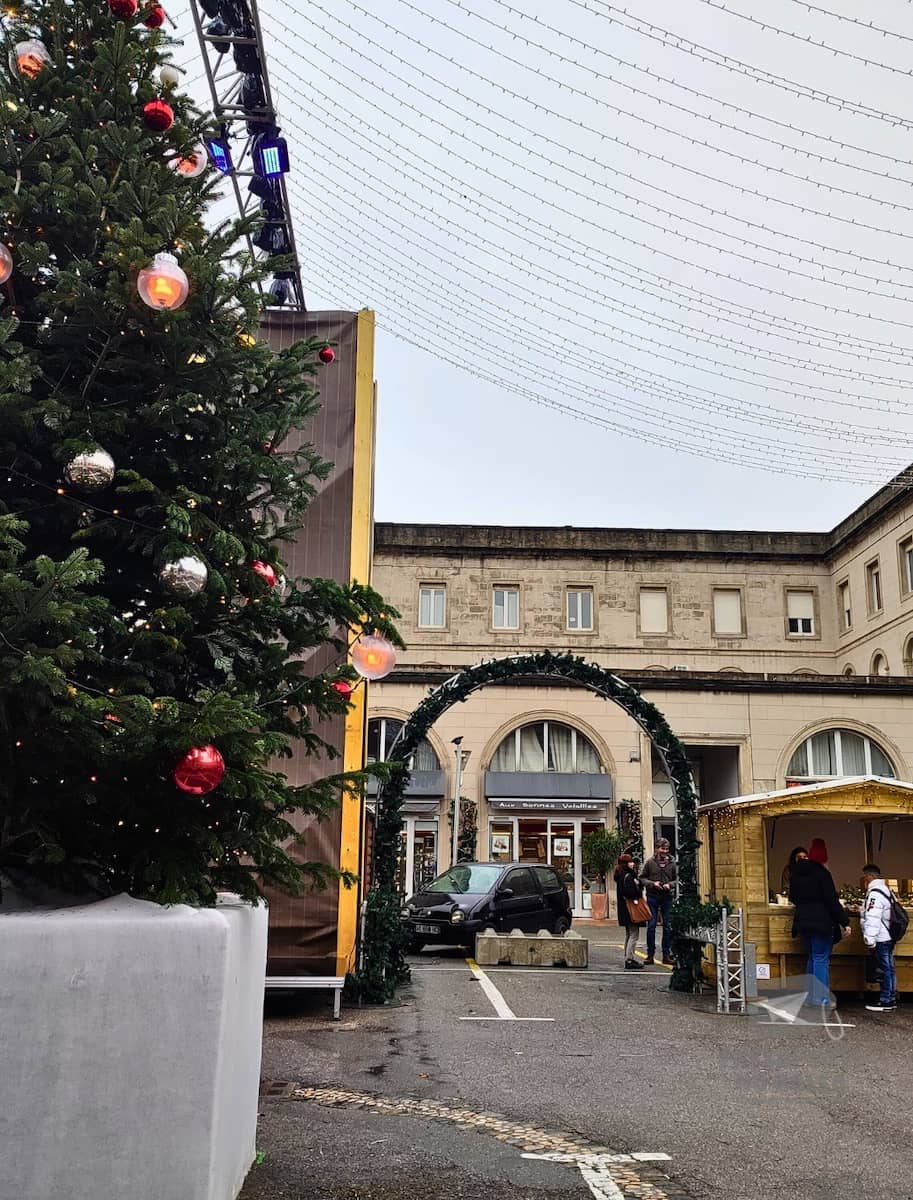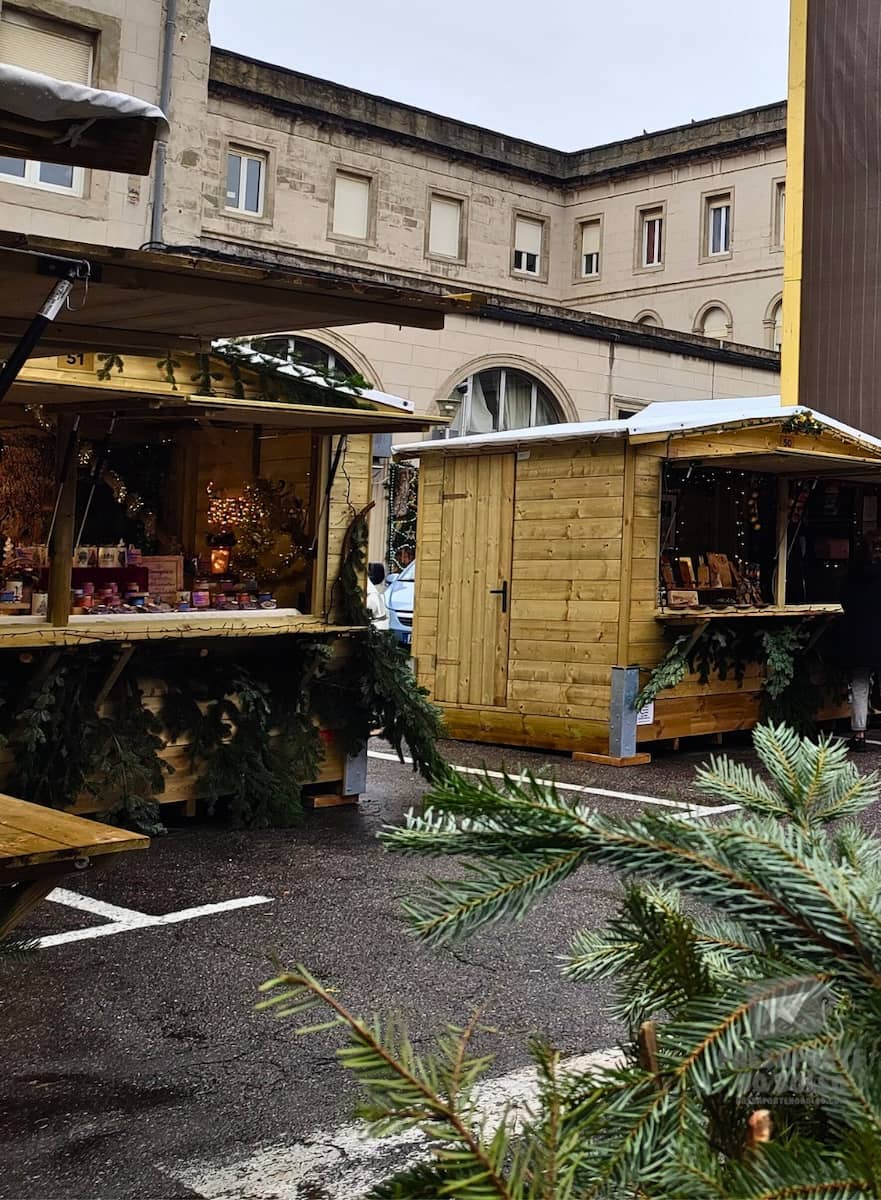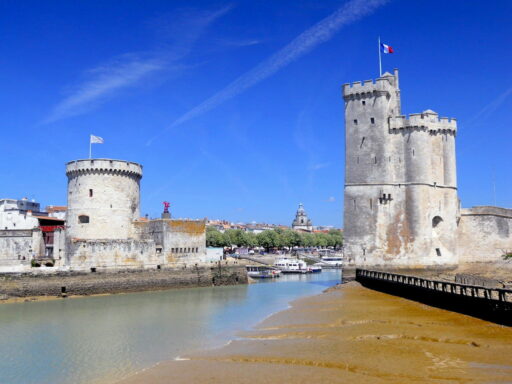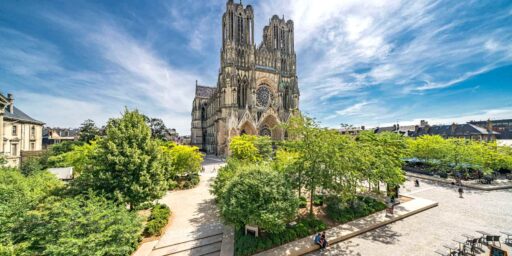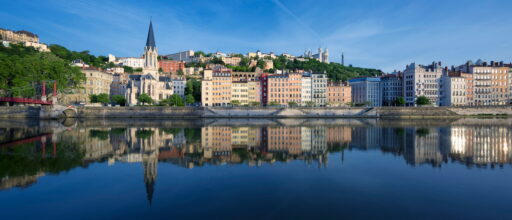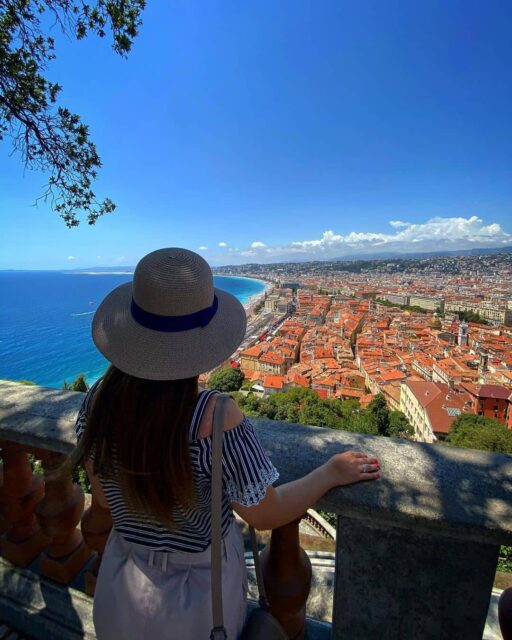Stepping into Carcassonne feels like walking straight into a fairy tale, where the magnificent medieval fortress with its 52 towers dominates the skyline of this enchanting city in southern France. The UNESCO-listed citadel, complete with cobbled streets and Gothic architecture, stands as one of Europe’s most impressive walled cities, offering visitors a chance to explore centuries of rich history from the 12th to the 17th century.
🏠 Where to Stay in Carcassonne
- 💎 Luxury Hotel: Hotel de la Cite
- ✨ 5-Star: Hotel du Roi
- 🏨 4-Star: Hotel du Chateau
- 🛏️ 3-Star: La Maison sur la Colline
- 💸 Cheap: Auberge de l'Aude
- 🏢 Apartament: Domloc
- 👨👩👧👦 For Families: Best Western Le Donjon
- 🏩 For Couples: Hotel Porte de la Cite
The medieval city of Carcassonne beckons with its remarkable Château Comtal, stunning stained-glass windows of the Basilica of Saints Nazarius and Celsus, and the charming atmosphere of La Cité. Beyond the ancient ramparts, the Languedoc region unfolds with its renowned wine culture, while the historic Canal du Midi connects the Atlantic Ocean to the Mediterranean Sea, creating endless opportunities for memorable experiences.
💁 Best Guided Tours
- Languedoc Wine Tasting Tour from € 25 (⭐4.7/5)
- Walking Tour of Medieval Carcassonne from € 170 (⭐5/5)
- Cité de Carcassonne Walking Tour from € 170 (⭐4.7/5)
- Carcassonne During World War 2 Tour from € 20 (⭐5/5)
Best Thing to Do in Carcassonne
1. 🏰 Château Comtal and la Cité de Carcassonne
Historical Legacy: The 12th-century Comtal Castle stands as the crown jewel of Carcassonne’s medieval city, featuring impressive military architecture and a rich collection of artifacts from various historical periods. The fortress played a crucial role during the Cathar crusades and later served as a royal residence under Louis IX.
Architectural Marvel: The castle’s defensive system, with its double walls and 52 towers, showcases the evolution of military architecture from the 13th to 17th centuries. The intricate Gothic details and preserved medieval decorative arts provide fascinating insights into life during the Middle Ages.
Time Saver: Purchase skip-the-line tickets online and visit during the first morning slot (9:30-11:00) to avoid peak crowds and get the best photography lighting.
⭐ Best Activities
Walking Tour of Medieval Carcassonne: This comprehensive walking tour takes you through the heart of medieval Carcassonne, exploring the UNESCO-listed fortified city with an expert guide. During the 2-hour experience, you’ll discover the fascinating history of the largest medieval fortress in Europe while visiting key landmarks including the Château Comtal, Saint-Nazaire Basilica, and the iconic ramparts, all while learning about the city’s role during the Albigensian Crusade and its remarkable restoration in the 19th century.
2. ⛪ Basilica of Saint-Nazaire and Celsus
Sacred Heritage: This remarkable basilica combines Romanesque and Gothic architectural styles, housing some of the finest stained-glass windows in southern France. The church’s construction spans from the 11th to 14th centuries, reflecting various artistic influences throughout its development.
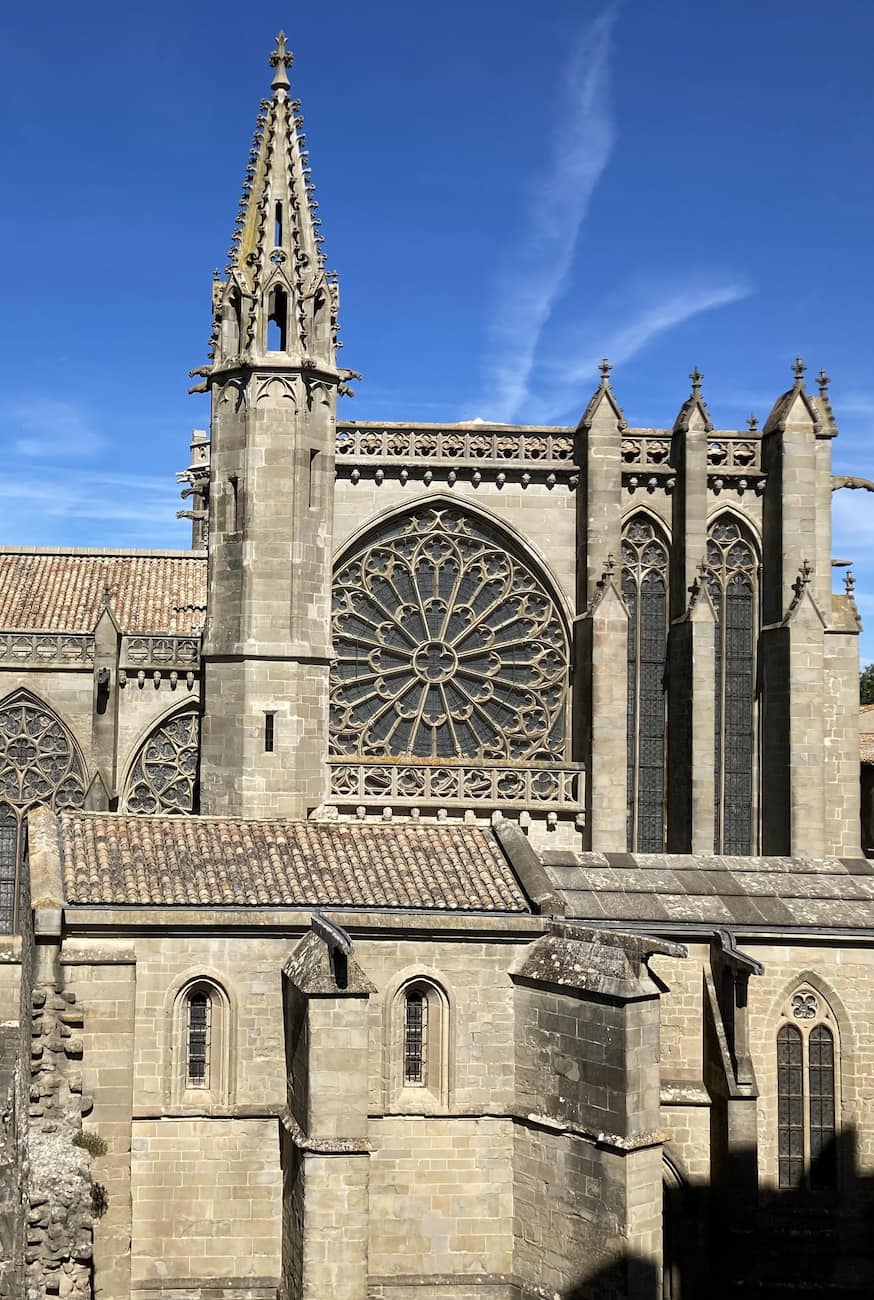
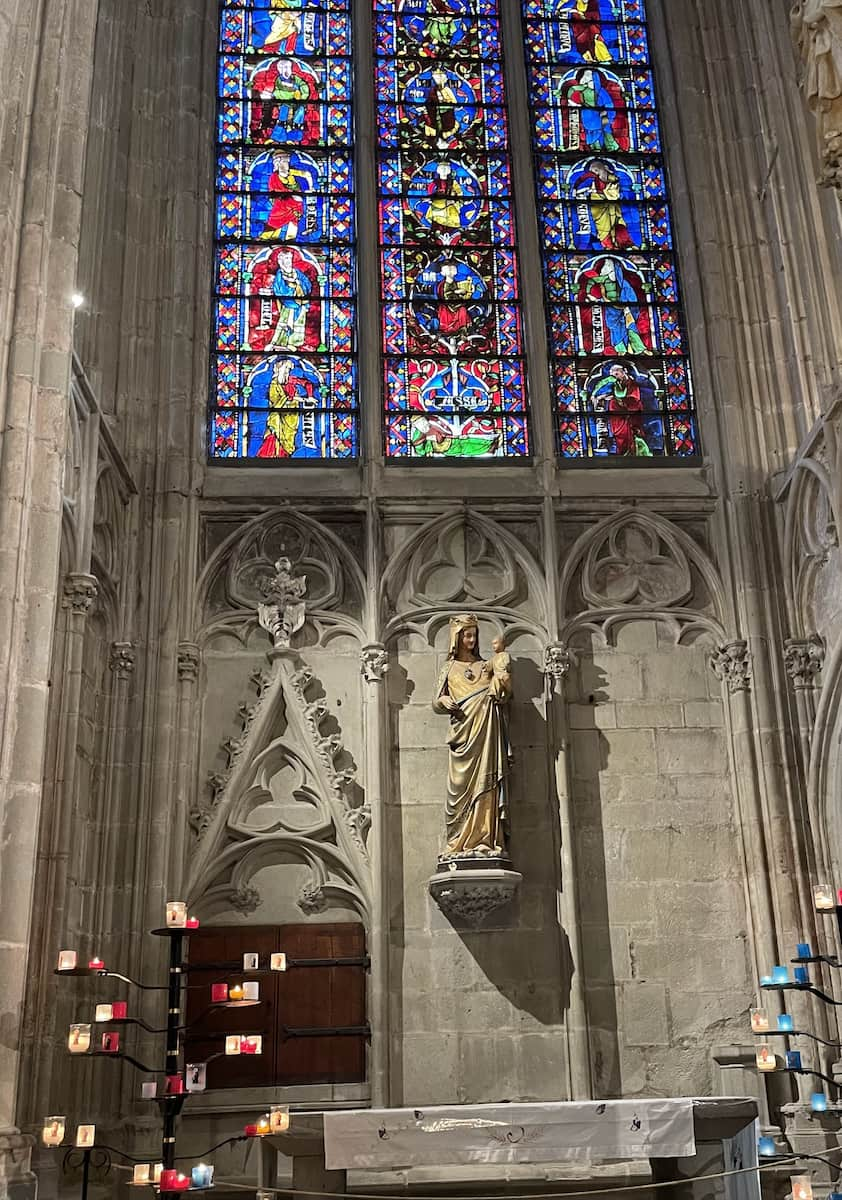
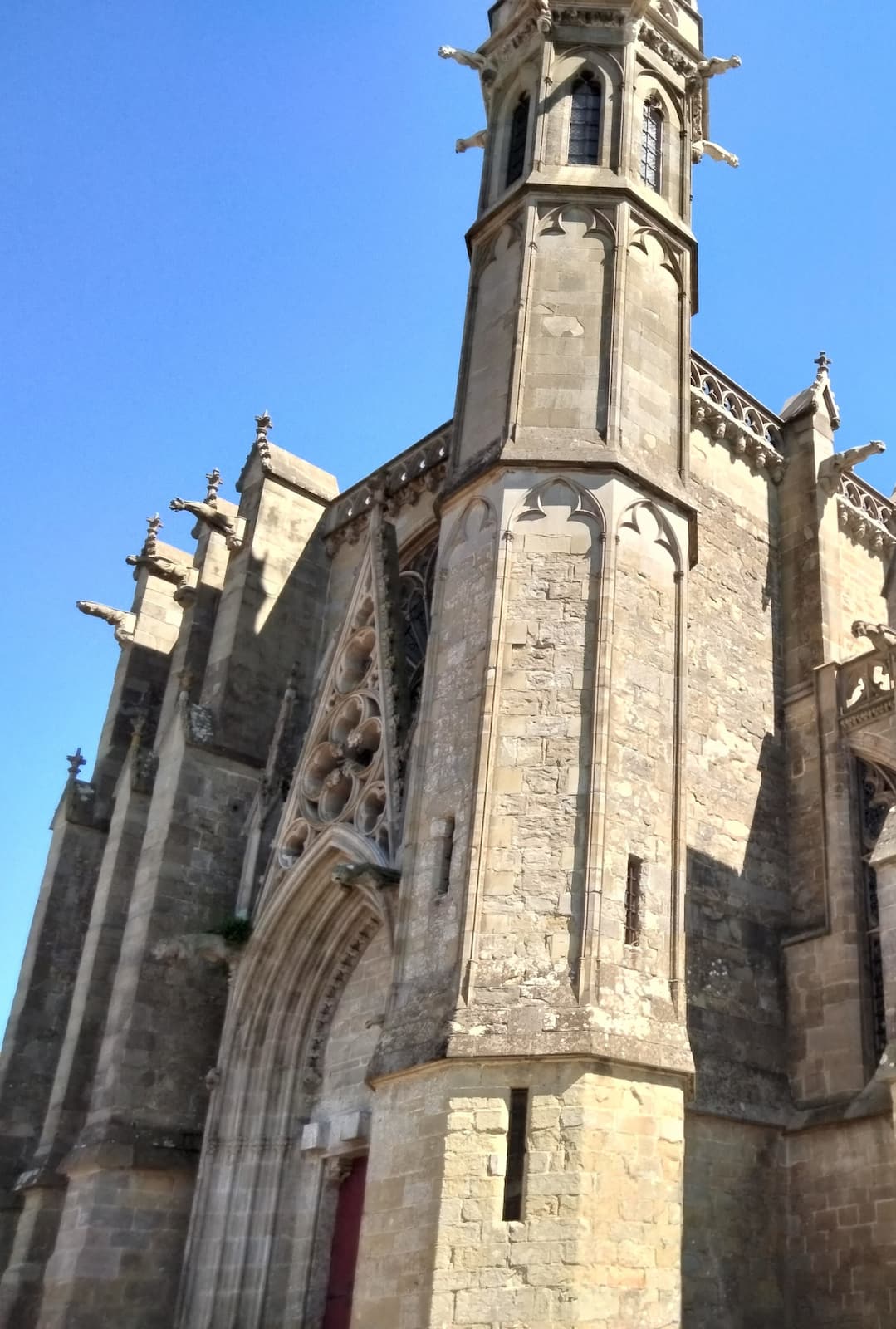
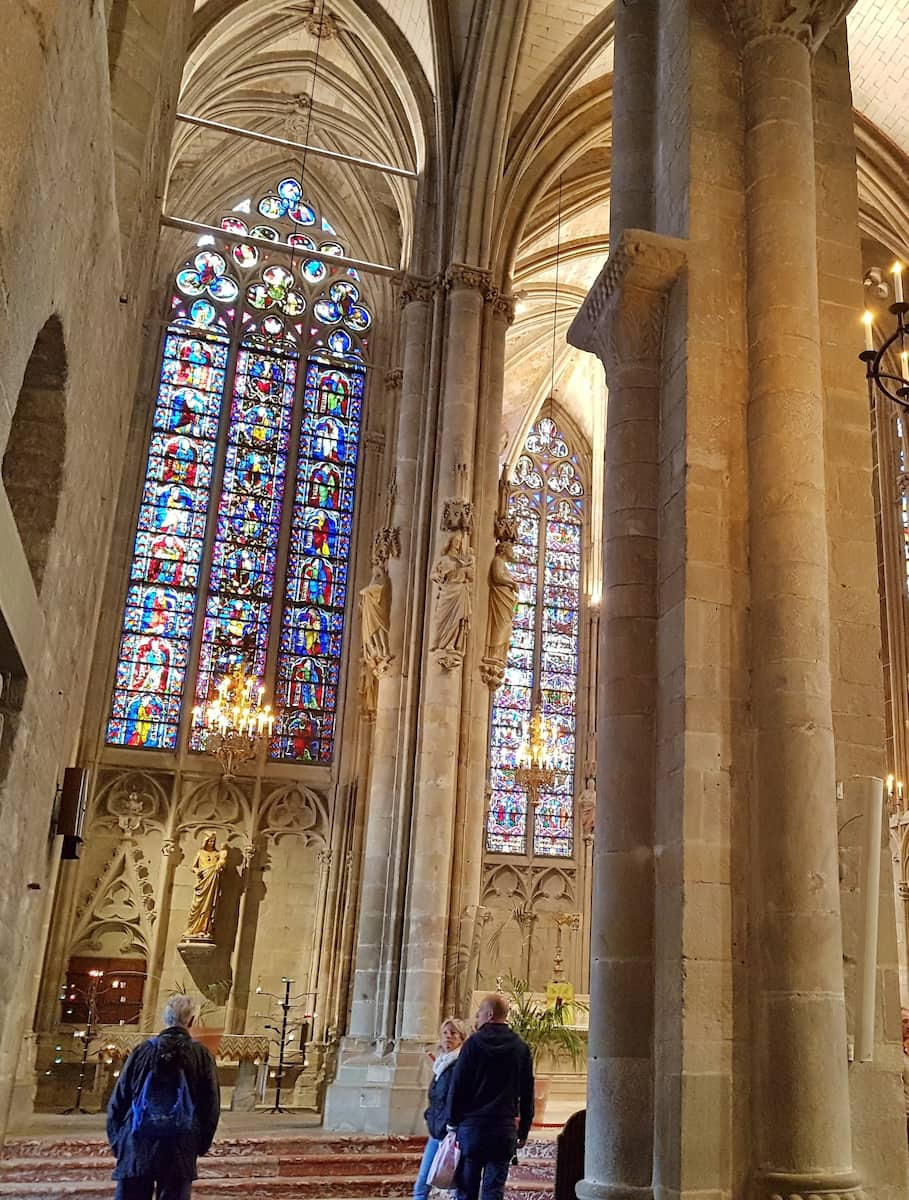
Artistic Treasure: The basilica’s rose windows and intricate stone carvings demonstrate the pinnacle of medieval craftsmanship. The nave contains exceptional examples of 13th-century religious art and sculptures that have survived centuries of history.
Insider Tip: Visit between 2-4 PM when sunlight streams through the stained-glass windows, creating magical light effects throughout the interior.
⭐ Best Activities
Carcassonne's Medieval Walls: A Self-Guided Tour: Explore the historic medieval walls of Carcassonne at your own pace with this self-guided tour. Immerse yourself in the rich history of this UNESCO World Heritage site, as you walk through centuries-old fortifications that have witnessed countless battles and stories.
3. 🏛️ Musée des Beaux-Arts
Collection Highlights: Housed in a restored 17th-century building, the museum showcases an impressive collection spanning from the 14th to the 20th century, including masterpieces by French, Dutch, and Italian artists. The museum’s pride is its collection of Flemish paintings and rare medieval manuscripts.
Cultural Significance: Beyond its permanent collection, the museum serves as a cultural hub hosting temporary exhibitions focusing on regional artists and contemporary works. The building itself, a former Présidial (royal court), features remarkable period architecture and original decorative elements.
Time Management: Allow 2-3 hours for a complete visit of both permanent and temporary exhibitions.
4. 🏺 Museum of the Inquisition
Historical Context: Located in a 14th-century building that once served as an actual interrogation site, this museum houses Europe’s largest collection of medieval judicial instruments and documents. The three-story exhibition space features authentic artifacts, including original manuscripts from inquisition trials and period-specific judicial equipment.
Educational Value: Each room chronologically presents the evolution of medieval justice systems from the 12th to the 18th century, with detailed multilingual explanations and historical reconstructions. The museum’s archive contains over 200 original documents from the period, including rare testimonials from actual trials.
Audio Guide Tip: Download the free audio guide app before your visit for enhanced experience.
5. ⛪ Chapelle des Dominicaines
Architectural Significance: This 13th-century Gothic chapel showcases remarkable features including original frescos, recently restored stained glass windows, and unique architectural elements from the Dominican order. The chapel’s acoustic properties make it a sought-after venue for classical music performances.

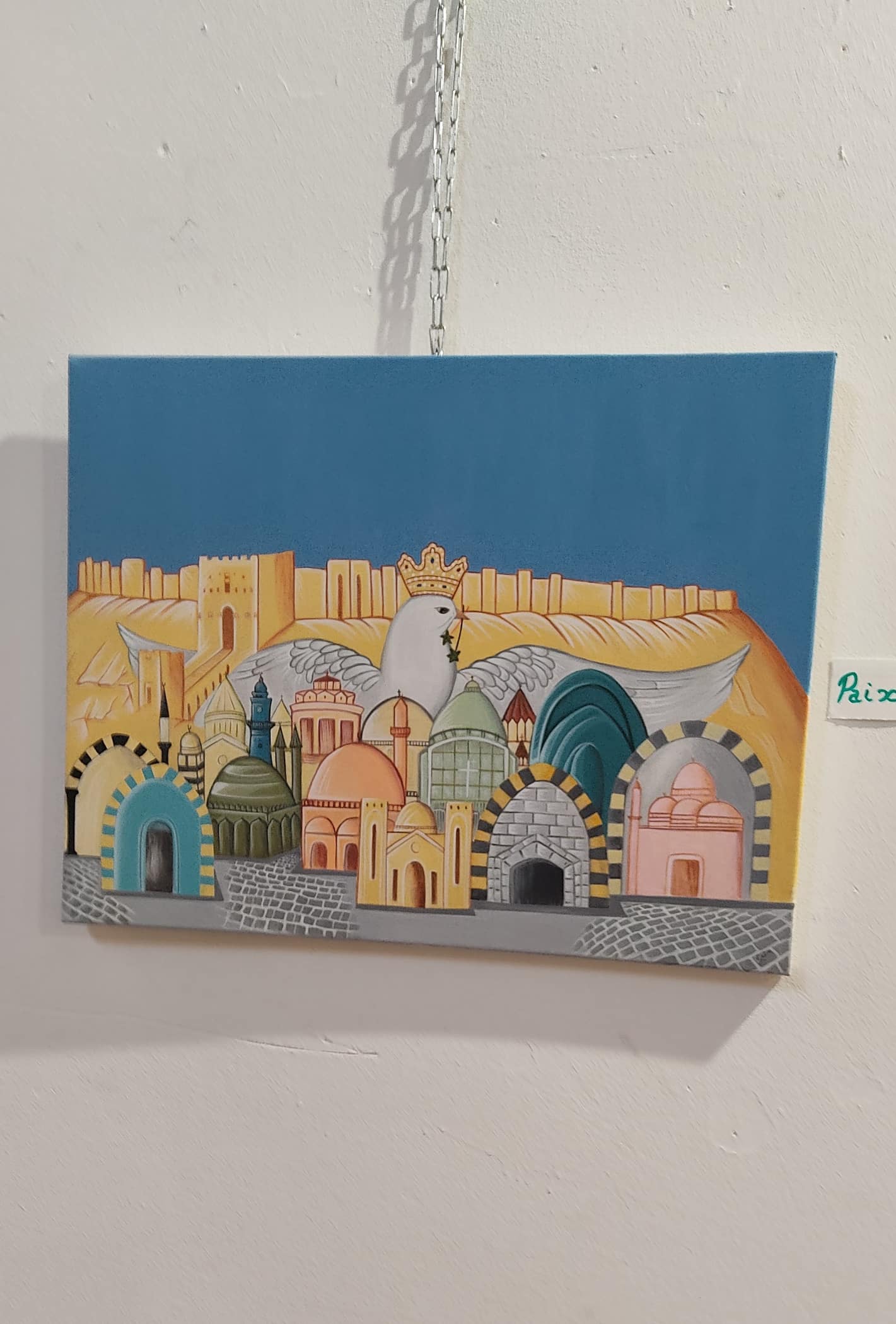
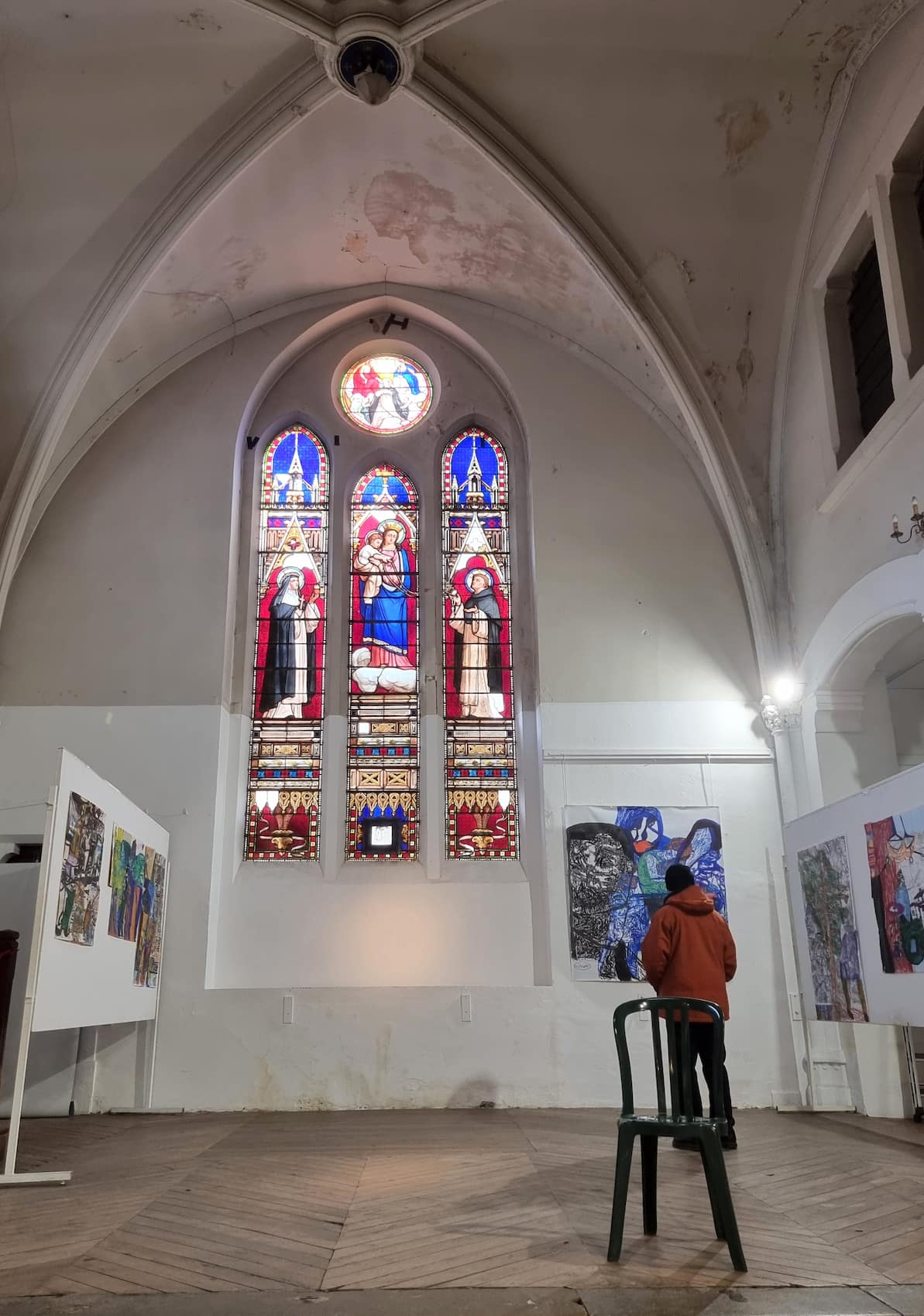
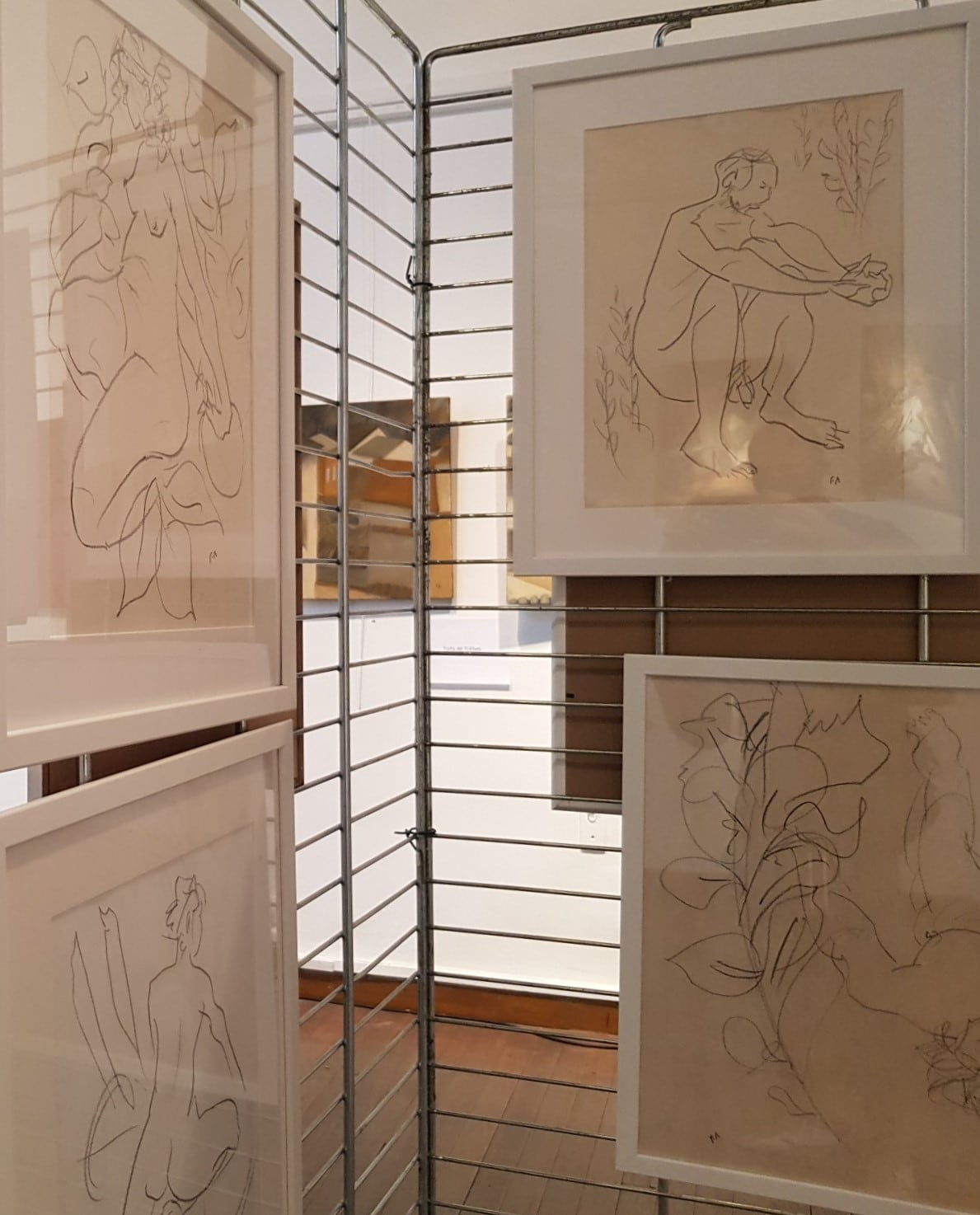
Historical Evolution: Originally part of a larger Dominican convent, the chapel survived various historical transformations, including use as a military hospital during the Revolution and later as a cultural center. The recent restoration in 2019 uncovered previously unknown medieval wall paintings.
Guided Tours: Available every Thursday morning with prior reservation.
Thing to Do in Carcassonne with Kids
1. 🏫 School Museum
Educational Journey: The school museum offers a fascinating glimpse into French education between the 1880s and 1960s, featuring original classrooms, teaching materials, and period furniture. Children can experience writing with ink wells and sitting at authentic wooden desks from different eras.
Interactive History: The museum’s collection includes vintage textbooks, maps, and educational tools that bring to life the evolution of French schooling. Special exhibitions showcase how teaching methods and school life have changed over nearly a century.
Top Tip: Visit during weekday mornings when school groups are less frequent, and ask about the interactive workshops often held for families.
2. 🦘 Le Parc Australien
Unique Experience: This distinctive animal park offers an immersive Australian experience just steps from the Medieval City. The park features red kangaroos, wallabies, dromedaries, and ostriches, along with a special nursery where visitors might witness baby kangaroos feeding or ostrich hatchings.
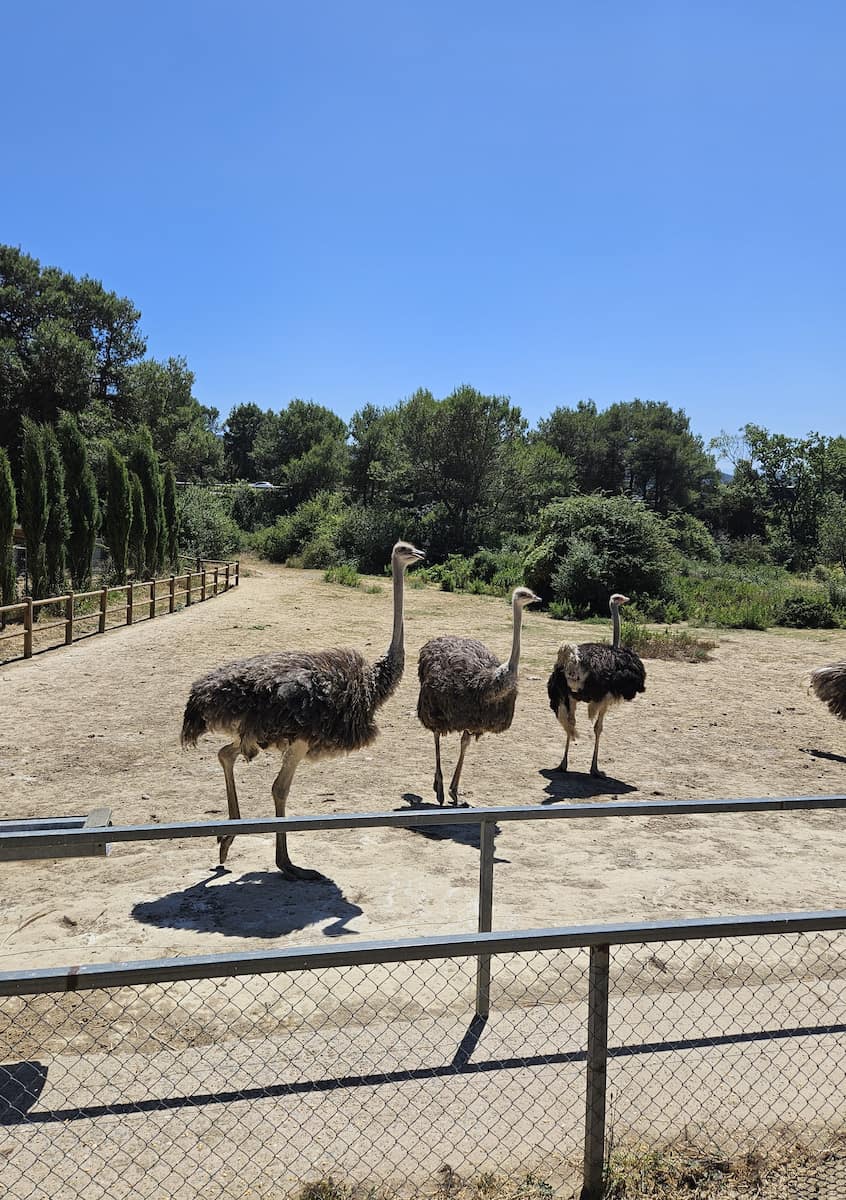


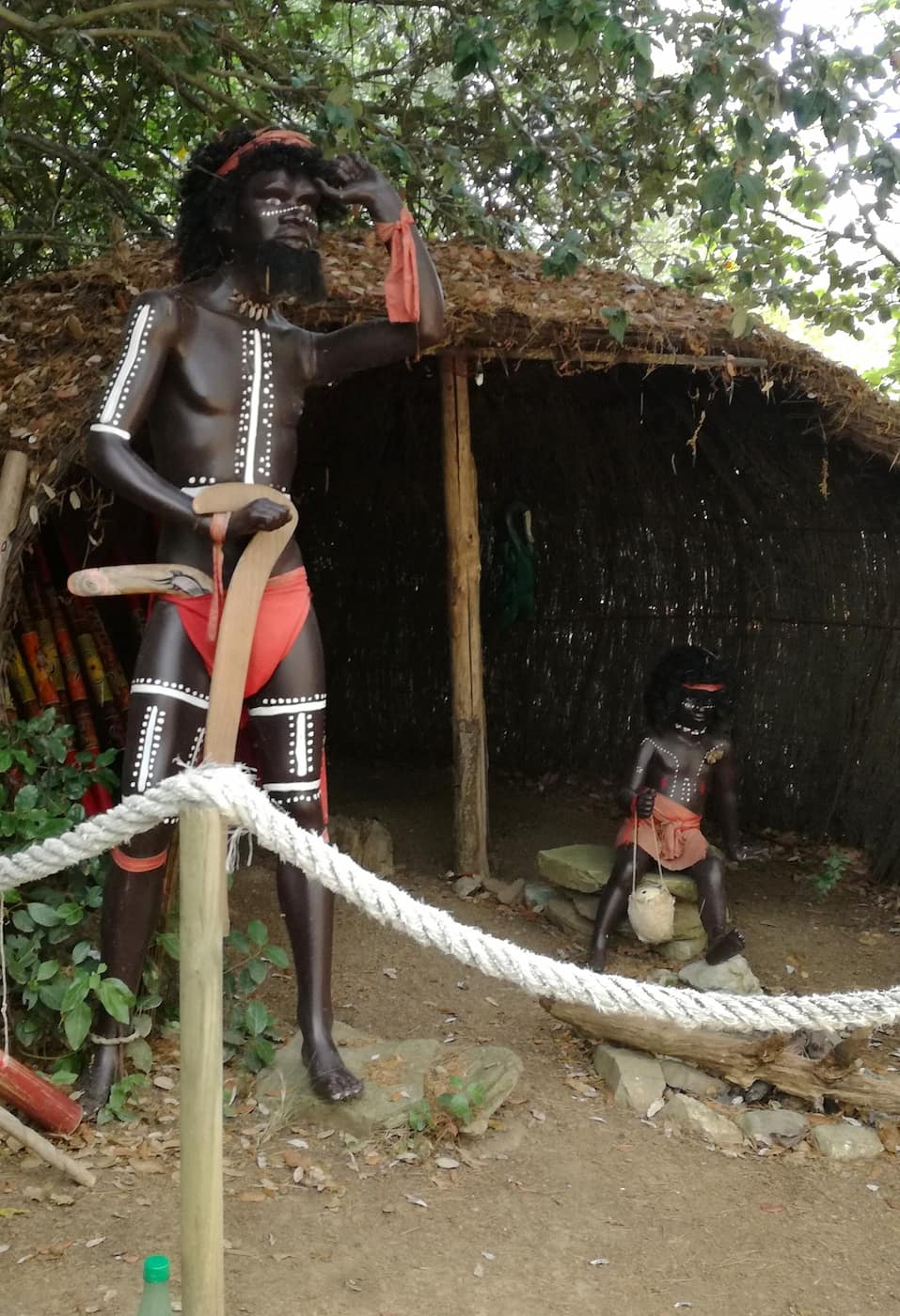
Cultural Elements: Beyond animal encounters, the park provides insights into Aboriginal culture and gold prospector life. Visitors can learn about boomerangs, experience bullroarers, and try playing the didgeridoo, making it both an educational and entertaining destination.
Time Saver: Visit during shoulder season for smaller crowds.
3. 🌟 Remparts et Lumières
Nighttime Spectacle: This sophisticated sound and light show transforms the medieval walls into a canvas of historical storytelling, using cutting-edge projection mapping technology to illuminate the 2.5km of ramparts. The show incorporates elements from different historical periods, from Roman times to the Cathar crusades.
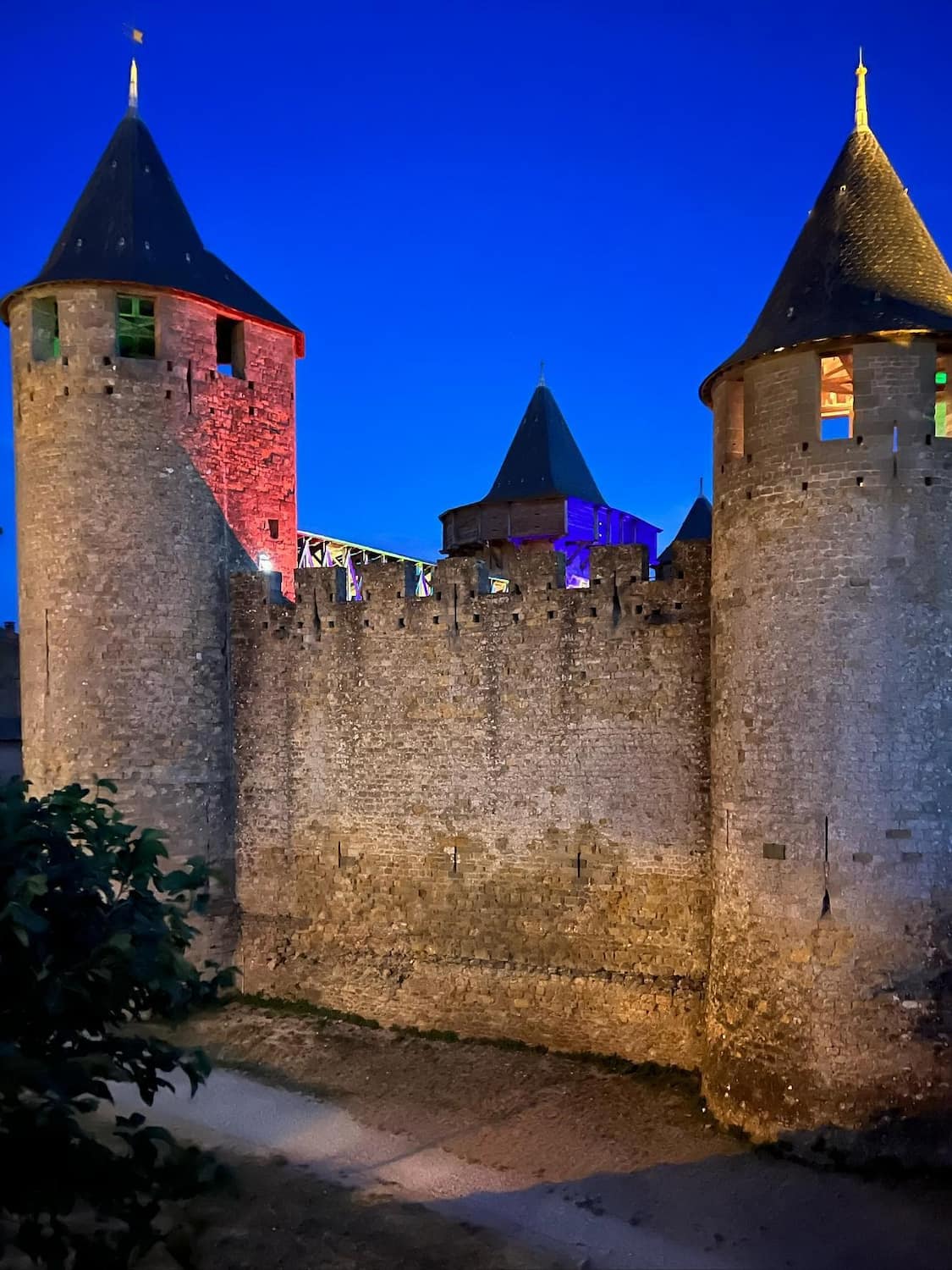
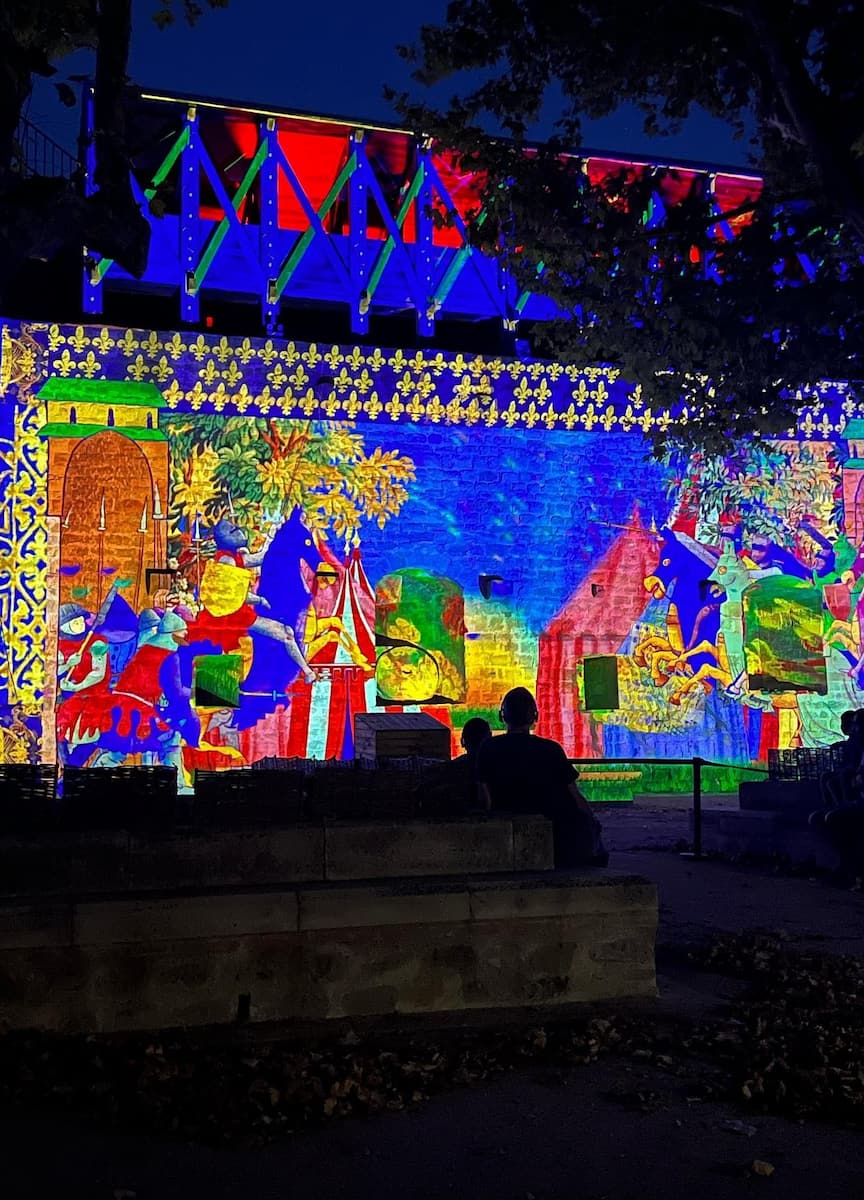
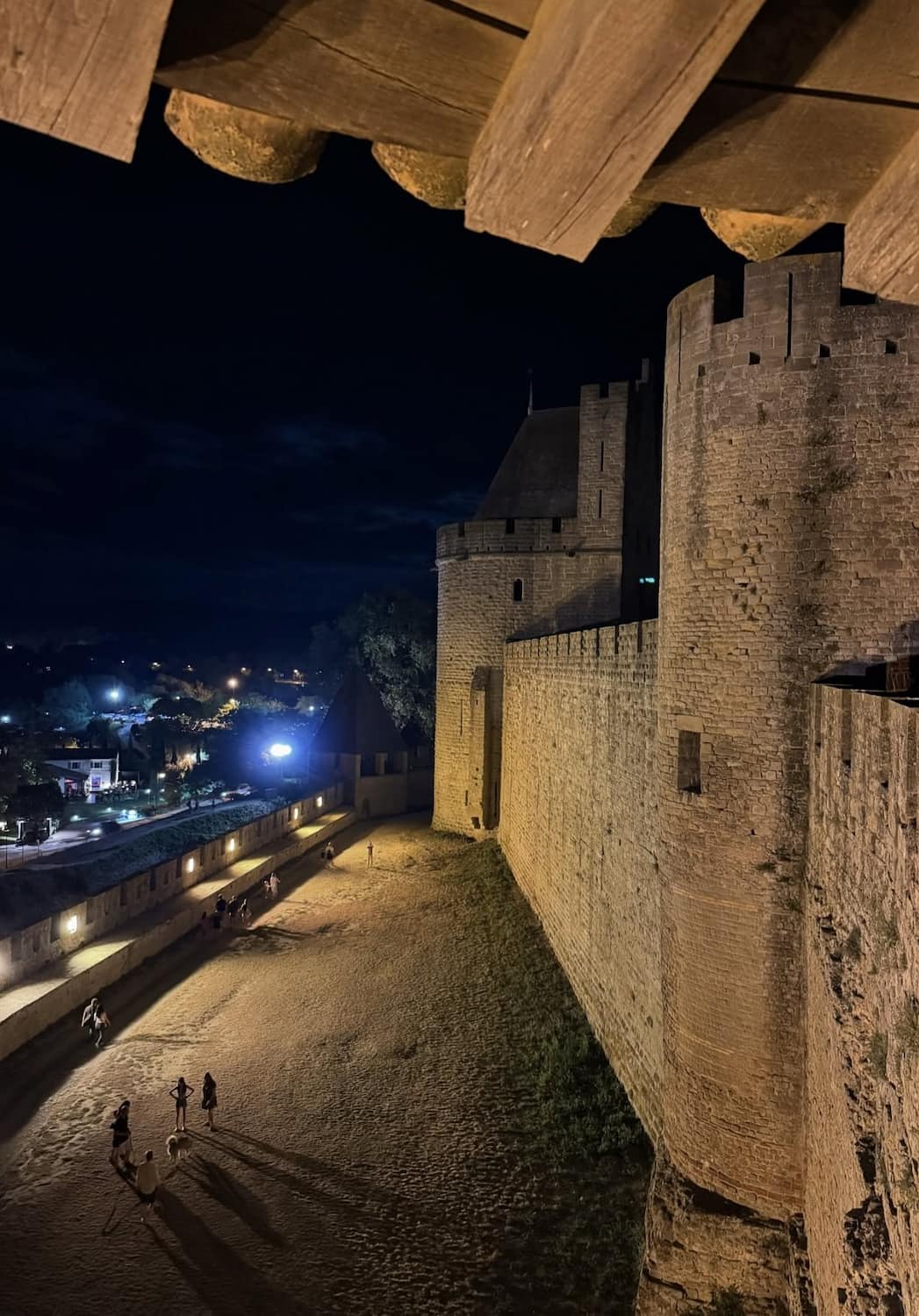
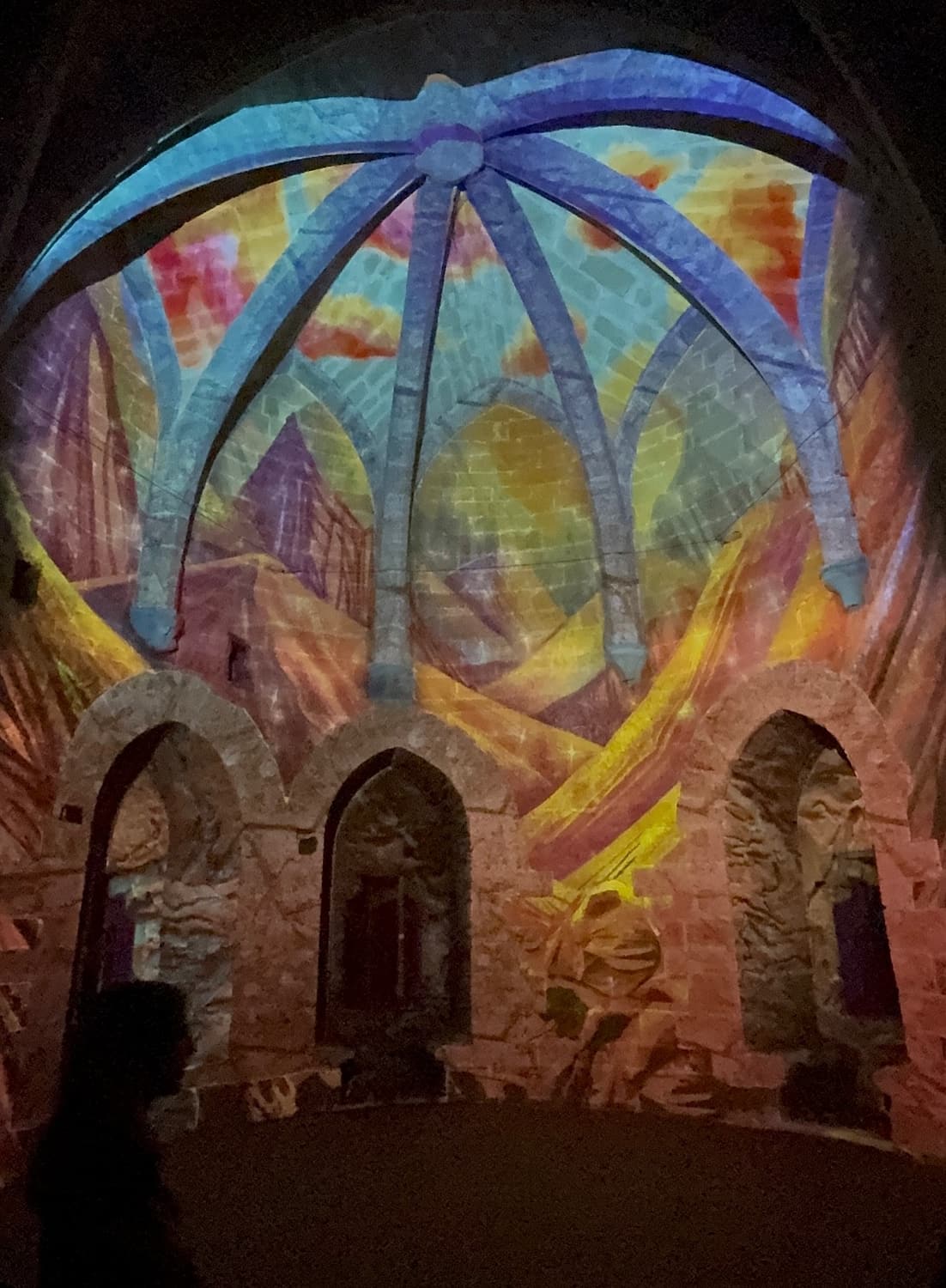
Technical Marvel: Created by renowned lighting designers, the show uses 70 high-powered projectors and a synchronized sound system to bring the fortress walls to life. The spectacle changes seasonally, with special themed shows during festivals and holidays.
Timing Tip: Shows run from April to October, with two performances nightly in peak season.
Free Things to Do in Carcassonne
1. 🌉 Pont Vieux
Historic Crossing: Built in the 14th century, Pont Vieux connects La Cité to Bastide Saint-Louis across the Aude River. This historic stone bridge offers stunning views of both sides of Carcassonne—on one side stands La Cité’s impressive fortifications; on the other lies Bastide Saint-Louis with its charming squares and bustling markets.
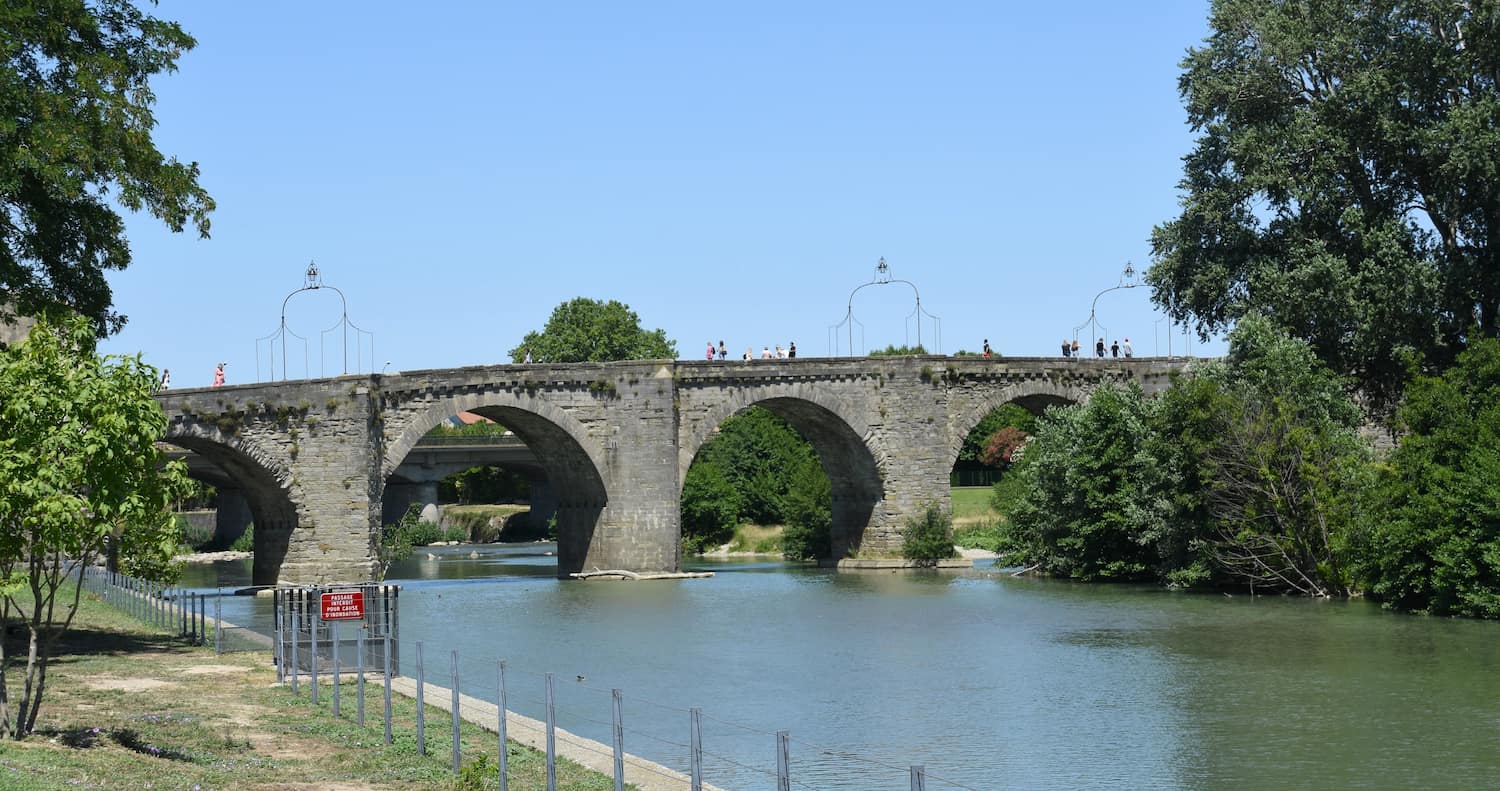
Perfect Photo Spot: As you walk across Pont Vieux, take time to enjoy panoramic views of Carcassonne’s two distinct areas: one ancient and fortified; one modern yet still steeped in history. It’s also an ideal spot for photos at sunset when golden light bathes both sides of town.
Top Tip: Head here early morning or late evening for peaceful walks without tourist crowds.
2. 🚶♂️ La Barbacane
Hidden Gem: For those looking to escape the busier parts of La Cité, Rue Barbacane offers a quieter alternative. This street, located just outside the fortified walls, leads into lesser-known areas like Rue Trivalle, where you can find charming local cafes and shops. It’s also a great spot to admire Carcassonne’s fortifications from a different angle.
Local Vibe: Walking along La Barbacane, you’ll experience a more authentic side of Carcassonne. The area is less crowded with tourists, making it ideal for those who want to explore at a slower pace. You’ll pass by quaint houses and small squares where locals gather, offering a true taste of life in this historic town.
Insider Tip: Stop by one of the small cafes along Rue Trivalle for a coffee break and enjoy views of the fortified city without the crowds.
3. 🌸 Calvaire Garden
Botanical Heritage: Established in 1825, this 2.5-hectare garden combines religious heritage with remarkable botanical diversity, featuring over 100 species of Mediterranean plants and a collection of century-old trees. The garden’s design incorporates 14 stations of the cross, carved from local limestone, along with a central calvary monument standing 12 meters high.
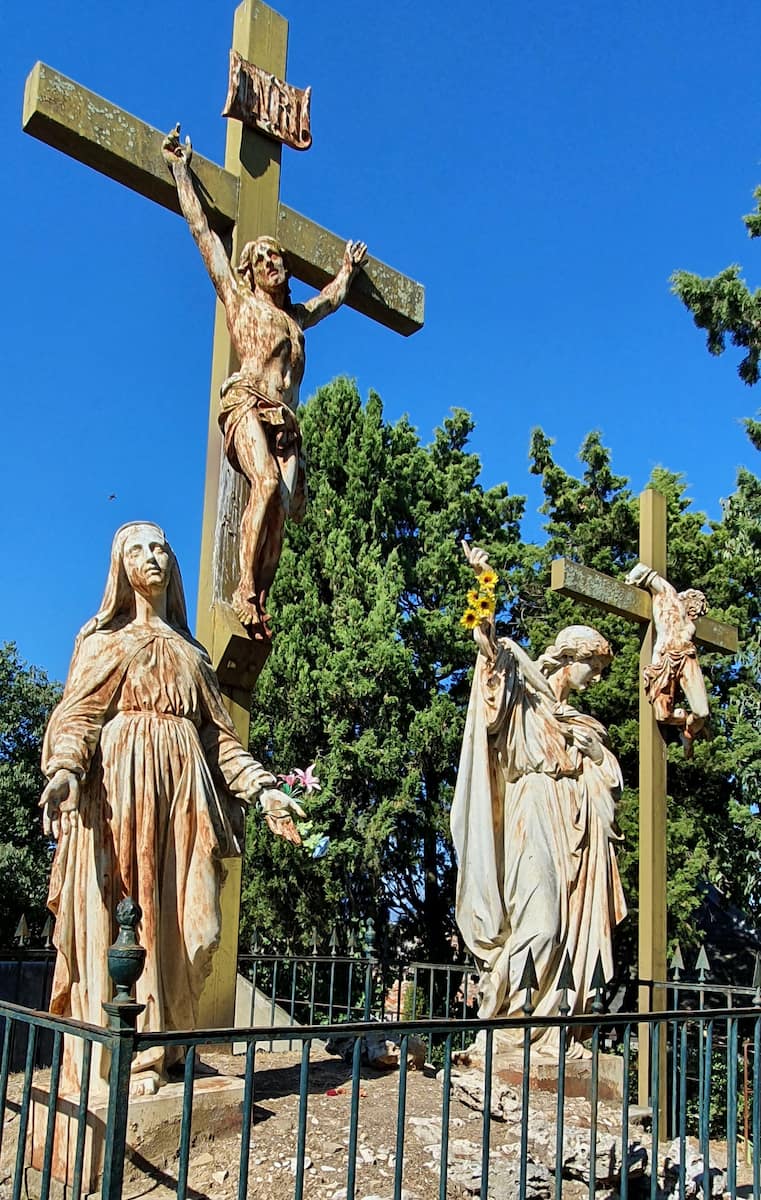
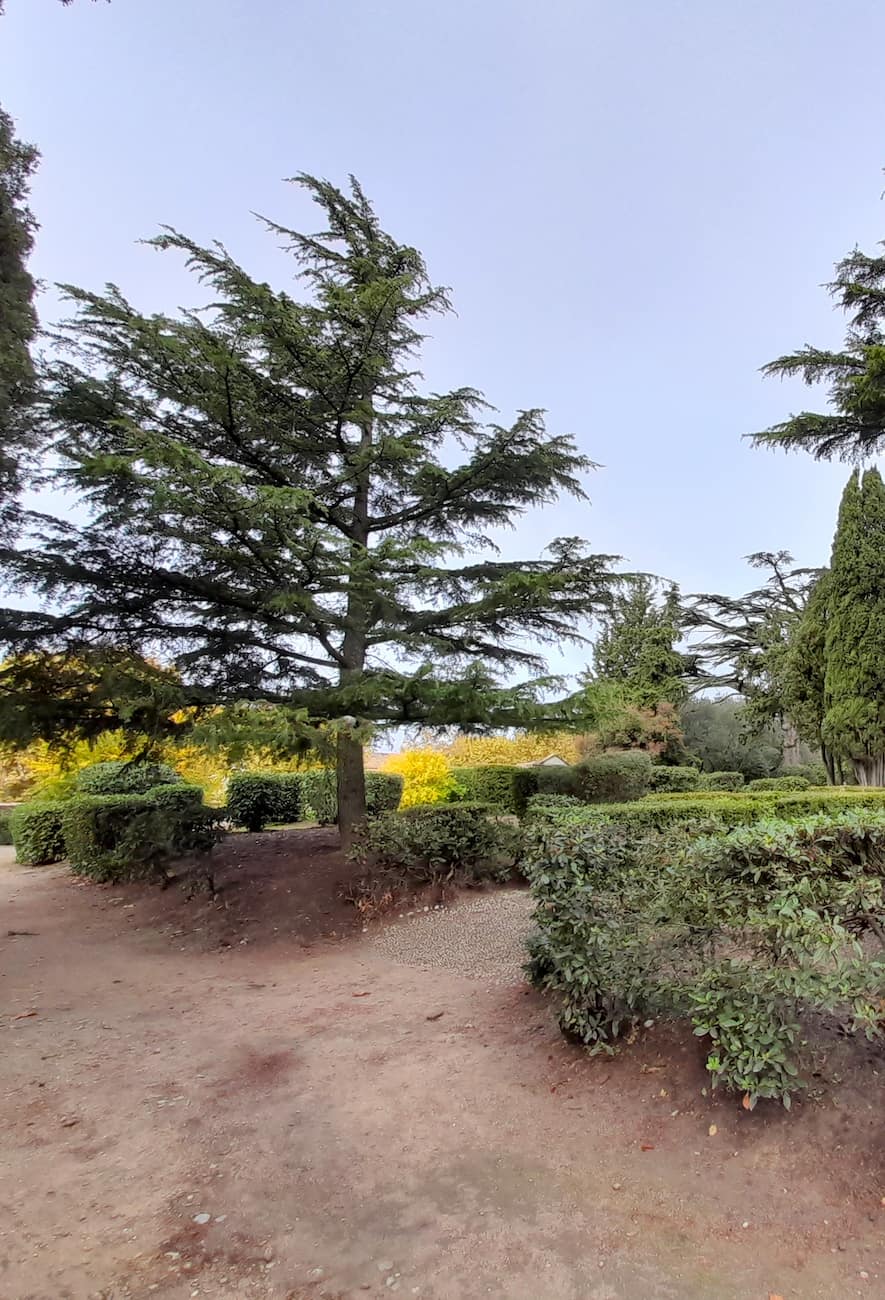
Landscape Design: The garden’s terraced layout offers multiple viewing points of both the medieval citadel and the modern city, with carefully planned pathways that follow the original 19th-century design. Recent archaeological discoveries revealed remnants of Roman water systems beneath the garden’s southern section.
Best Timing: Visit at sunrise for photography and peaceful meditation.
4. 🏰 Porte d’Aude
Hidden Gem: Dating back to the 13th century, this western gate was originally the main entrance during Roman times. The gate complex includes a barbican, drawbridge pit (now filled), and unique architectural features from three distinct periods: Roman, Visigothic, and Medieval. The gate’s defensive system includes rare examples of arrow loops designed specifically for crossbows, a technological innovation of the 13th century.
Local Vibe: The steep cobblestone approach, known as “Montée des Moulins” (Mill’s Ascent), connects to the historic flour mill district where three restored medieval mills still stand. Local history enthusiasts gather here every first Sunday for guided tours, sharing stories of the gate’s role during the Albigensian Crusade.
Insider Tip: Access the little-known viewing platform on the western tower (open 10 AM-4 PM, closed Mondays) for spectacular photos of the Aude Valley and Montagne Noire.
5. 🌳 André Chénier Garden
Garden Heritage: Named after the famous French poet who visited Carcassonne, this carefully maintained garden features a diverse collection of native and exotic plants. The space includes several micro-climates that support different botanical species, from Mediterranean to Alpine varieties.

Cultural Space: The garden hosts regular cultural events, including poetry readings and outdoor concerts, continuing the literary legacy of its namesake. Recent renovations have added sustainable irrigation systems while preserving historical landscaping elements.
Insider Tip: Look for the commemorative plaque detailing André Chénier’s connection to Carcassonne, and visit during spring when the garden is in full bloom.
6. ⚔️ Porte Narbonnaise
Architectural Wonder: The main gateway to the medieval city stands as a masterpiece of 13th-century military architecture, featuring twin towers rising 25 meters high and an intricate defense system. The gate’s complex includes original arrow slits, murder holes, and a restored drawbridge mechanism that demonstrates medieval engineering ingenuity.
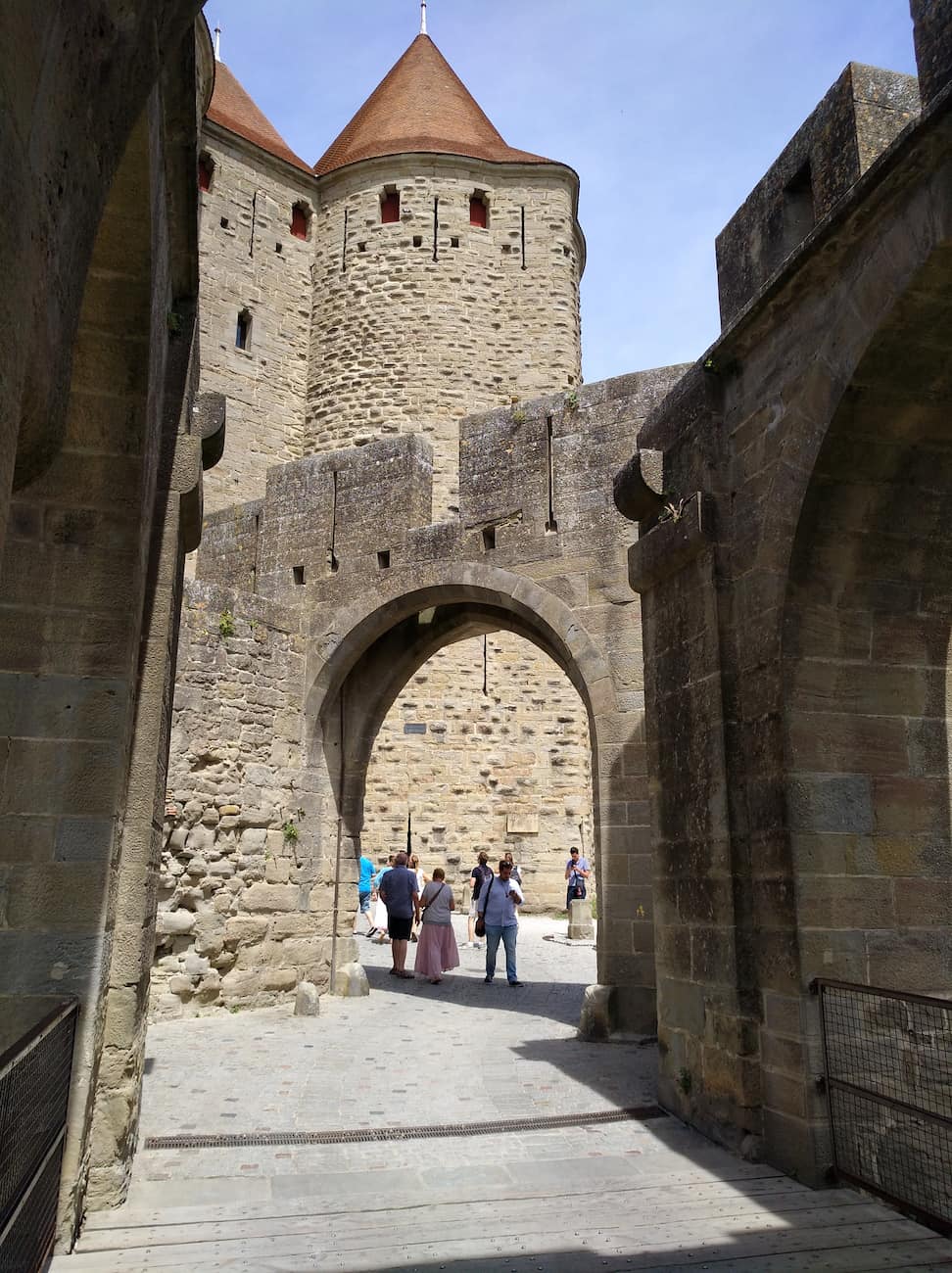

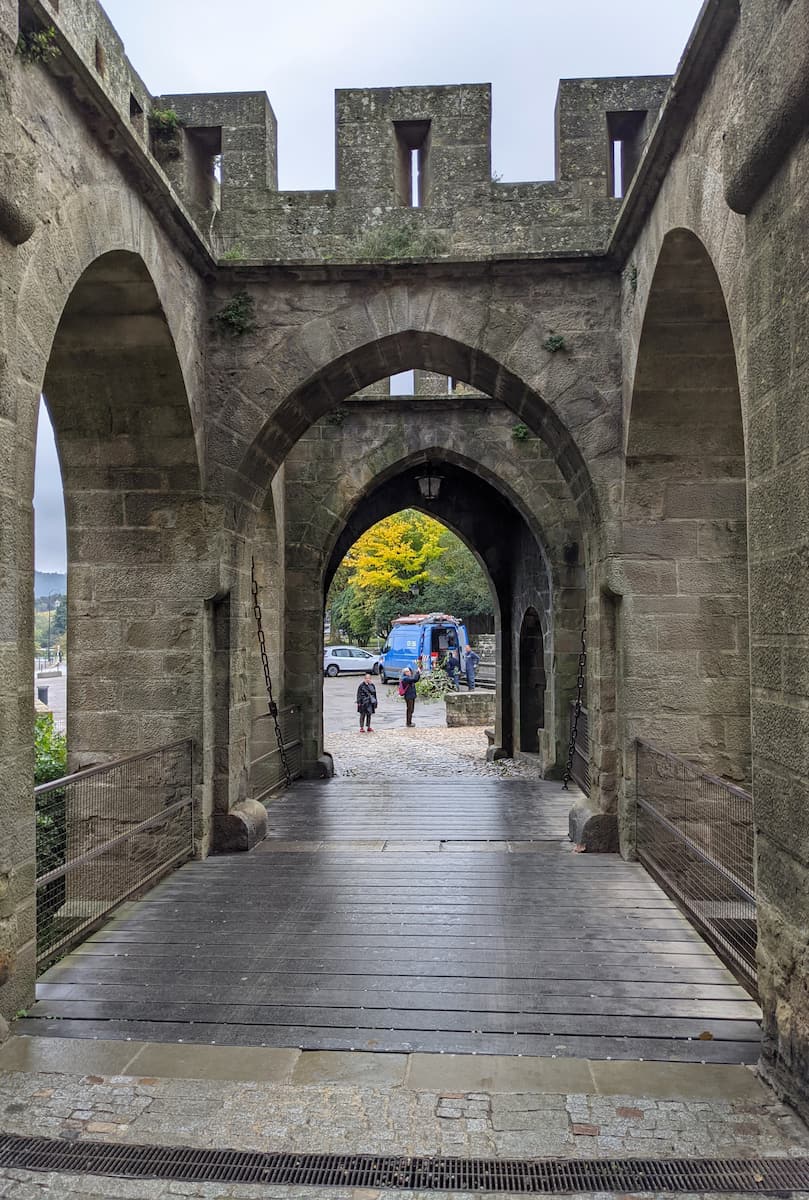
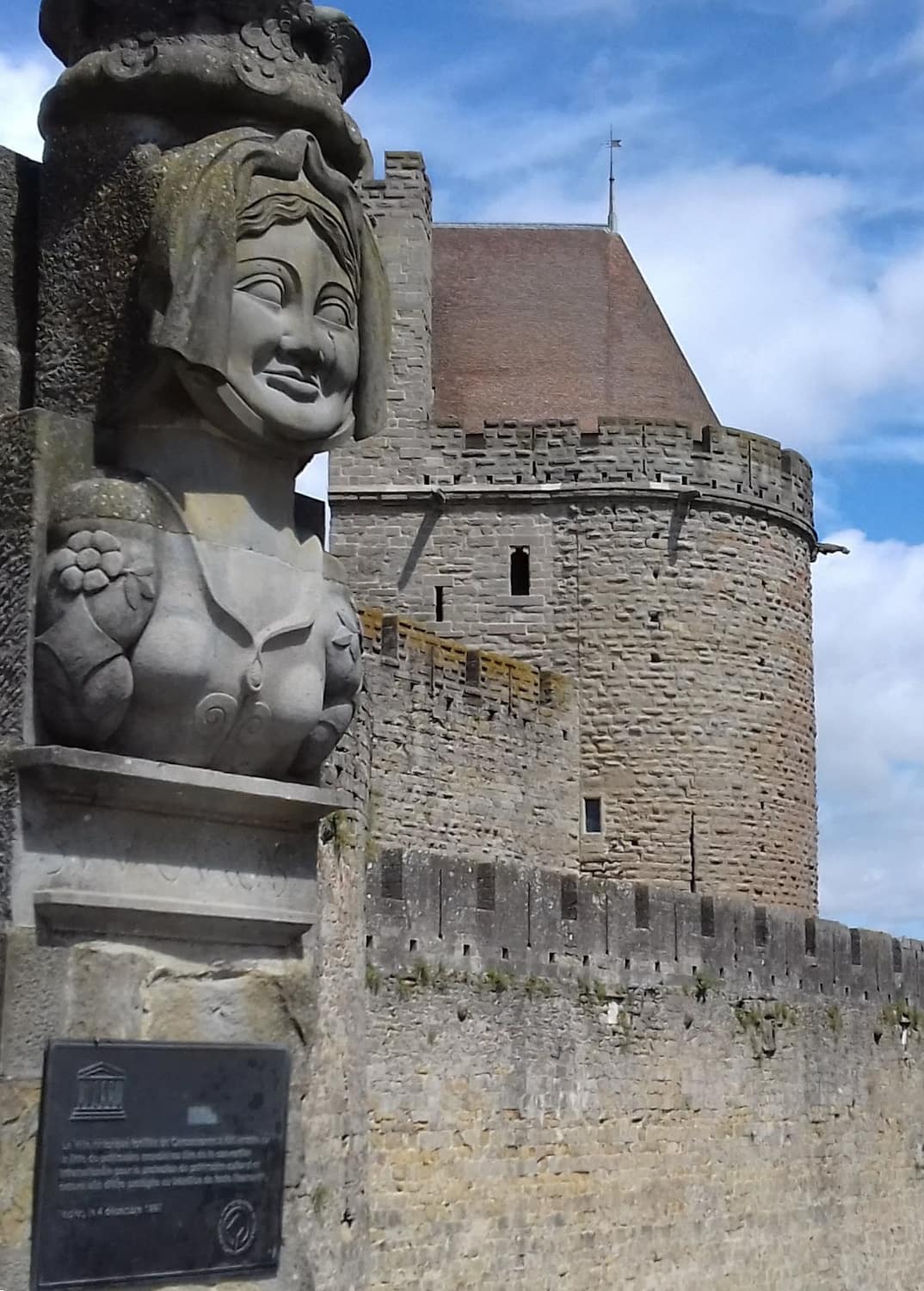
Historical Details: The entrance still bears marks from various historical periods, including Roman foundation stones and medieval mason’s marks carved into the lower blocks. The gate’s defensive features include unique cross-shaped arrow loops specifically designed for crossbowmen, and the original wooden door reinforced with iron dates back to the 14th century.
Peak Hours Avoider: Visit before 9 AM or after 4 PM to avoid tour groups.
7. ⚓ Écluse de Carcassonne
Hidden Gem: This historic lock system on the Canal du Midi offers more than just boat-watching. The lock-keeper’s house, with its traditional architecture and flowering gardens, provides a glimpse into canal life. The surrounding area features hidden benches under century-old plane trees, perfect for peaceful contemplation away from tourist routes.
Local Vibe: During summer evenings, you’ll find locals gathering near the locks, sharing stories and watching boats navigate the water steps. Fishermen set up their spots early in the morning, creating a serene atmosphere that feels unchanged by time. The lock-keeper’s friendly interaction with passing boats adds to the authentic charm.
Insider Tip: Time your visit around 10 AM or 3 PM when most boats pass through, and bring a picnic to enjoy on the grassy banks while watching the fascinating lock operation.
8. 🌳 Parc de Camin del Garric
Natural Haven: This expansive 70-hectare public park borders the medieval city’s outer walls, offering a peaceful retreat from urban life. The park features diverse zones including children’s play areas, picnic spots, hiking trails, and a protected natural area.
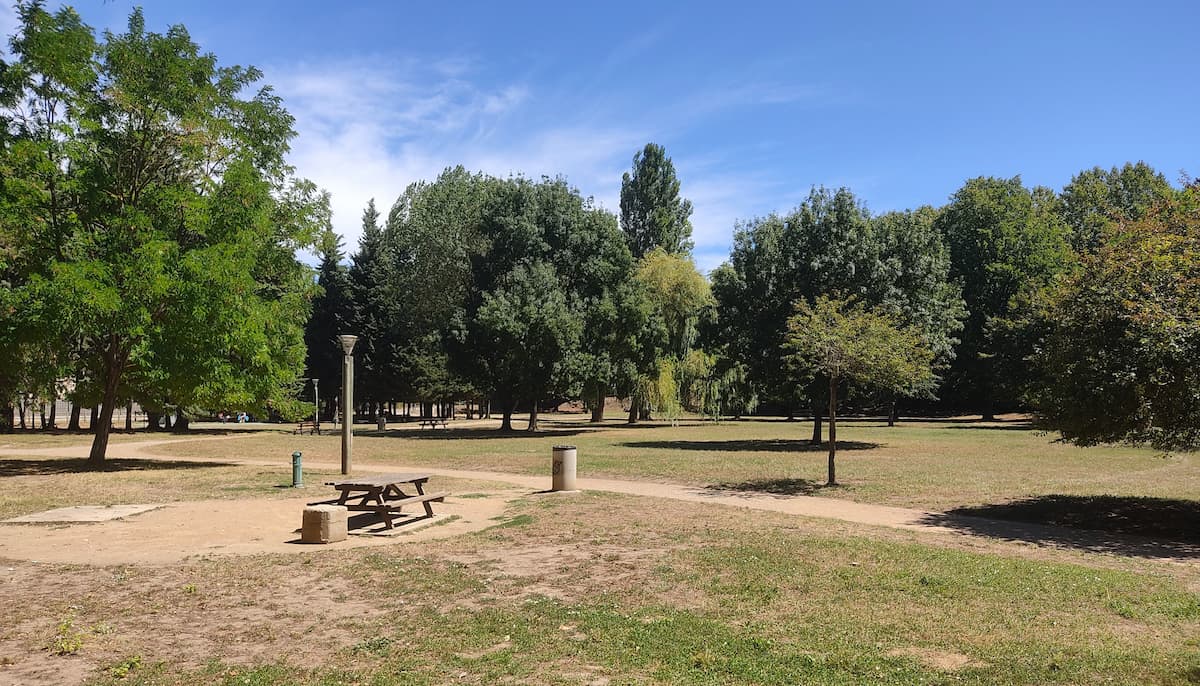
Wildlife Sanctuary: The park is home to various native flora and fauna, including deer, foxes, squirrels, rabbits, and numerous bird species. Its hilltop location provides panoramic views of the city and surrounding mountains.
Family Friendly: Dedicated play areas and picnic facilities.
Seasonal Activities in Carcassonne
☀️ Summer (June – August)
Festival de Carcassonne (June 21 – August 5): Every summer, Carcassonne comes alive with the Festival de Carcassonne, one of France’s largest cultural festivals. This event features more than 120 performances, including opera, theater, dance, and music, set against the backdrop of the medieval city of Carcassonne. Performances are held in Château Comtal, Tour Régine, and open-air stages within the fortified medieval city.
Bastille Day Fireworks (July 14): Bastille Day celebrations in Carcassonne are legendary. The highlight is an epic fireworks display over the medieval fortress, which lights up the night sky and reflects off the Aude River. Thousands of visitors gather to watch this spectacular event, making it one of the most anticipated nights of the year.
Time Saver: Arrive early to secure a good viewing spot along Pont Vieux or near La Barbacane for unobstructed views of the fireworks.
🍂 Autumn (September – November)
European Heritage Days (September 16-17): During these two days in September, Carcassonne opens its doors to hidden historical gems as part of the annual European Heritage Days celebration. Many sites that are usually closed to the public, including private courtyards and sections of La Cité de Carcassonne, become accessible for free guided tours.

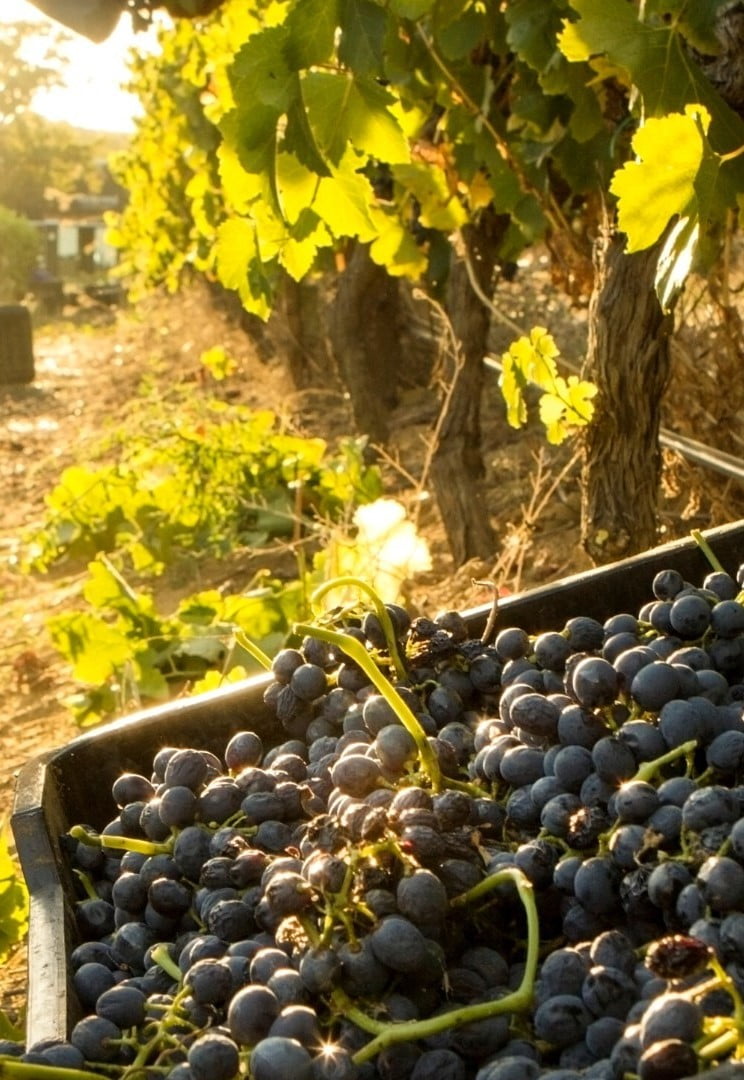
Wine Harvest Season (September – October): Autumn is also harvest season in the surrounding Languedoc wine region, making it a perfect time to visit local vineyards. Many wineries offer special tours during this period, allowing visitors to participate in grape picking and taste freshly pressed wines. It’s an immersive way to experience the region’s rich winemaking traditions.
Top Tip: Plan your visit early during Heritage Days as some locations have limited capacity and fill up quickly. Wear comfortable shoes for walking tours around both La Cité and Bastide Saint-Louis.
🌸 Spring (March – May)
Spring Blooms at Lac de la Cavayère: Spring transforms the area around Lac de la Cavayère, just outside Carcassonne, into a vibrant landscape filled with blooming flowers and lush greenery. The lake is perfect for leisurely walks or picnics by the water, surrounded by nature at its finest. It’s also a great spot for outdoor activities like hiking or paddle boating.
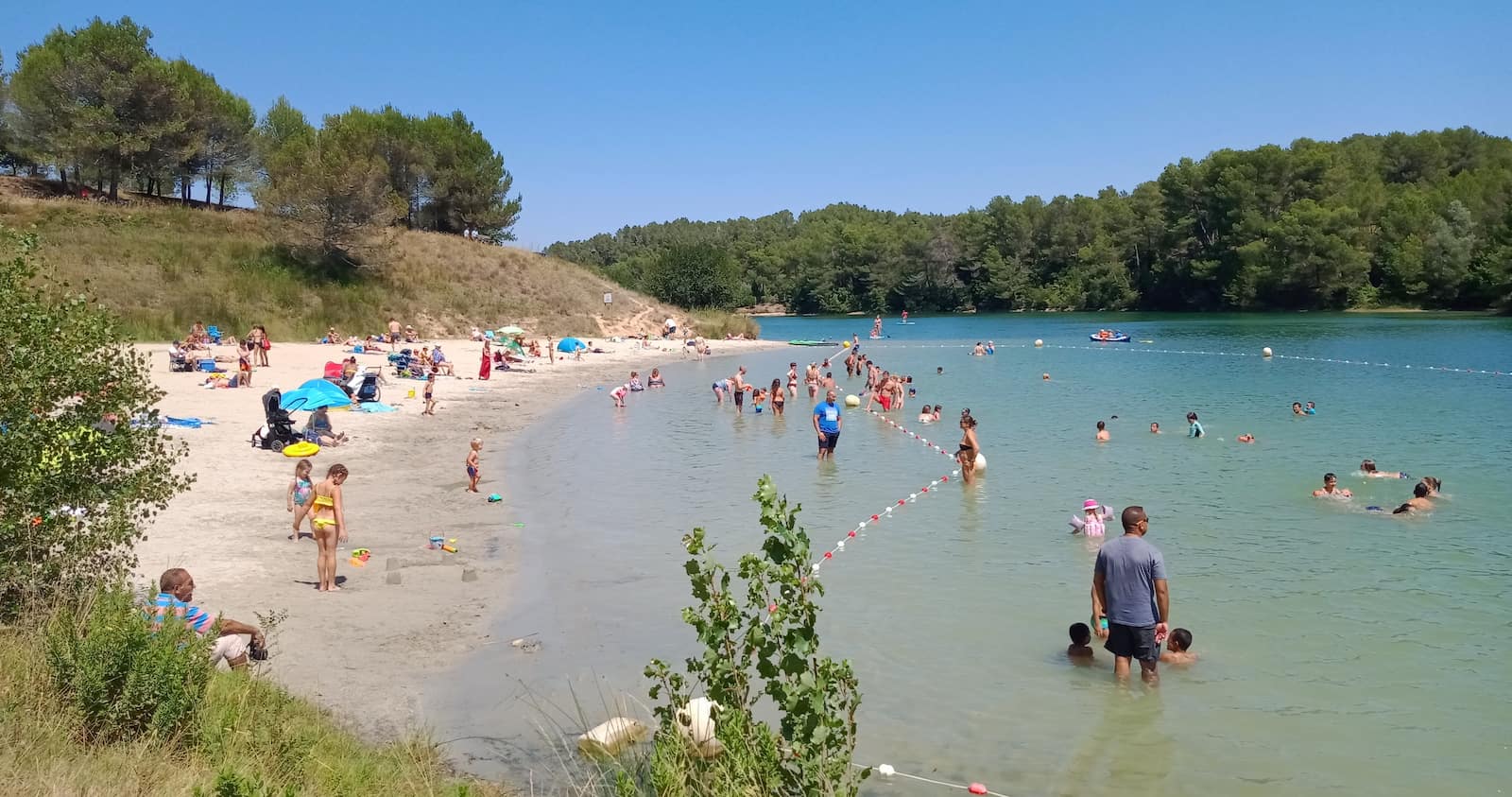
Nature Escape: The lake was formed as part of a dam project and has since become a favorite spot for locals seeking relaxation away from the bustling town center. In spring, it’s quieter than during summer months, making it ideal for peaceful exploration.
Insider Tip: Visit early in spring (March-April) before temperatures rise and crowds arrive for summer activities at Lac de la Cavayère.
❄️ Winter (December – February)
Carcassonne Christmas Market (December 1 – January 6): During winter, Carcassonne transforms into a festive wonderland with its annual Christmas market held in Bastide Saint-Louis. The market features charming wooden chalets selling local crafts, food, and holiday treats like mulled wine and roasted chestnuts. The streets are adorned with twinkling lights, creating a magical atmosphere perfect for holiday shopping or simply soaking up the festive spirit.
Winter Magic: In addition to shopping, visitors can enjoy ice skating at an outdoor rink or take part in holiday-themed events like caroling or live nativity scenes. The market brings together locals and tourists alike for a warm celebration during chilly winter nights.
Top Tip: Visit on weekdays when crowds are smaller, allowing you more time to browse through stalls without long lines.
Day Trips from Carcassonne
1. 🏰 Castles of Lastours
Cathar Strongholds: Just 20 kilometers north of Carcassonne lie the Castles of Lastours, four medieval fortresses perched high on rocky cliffs overlooking the valley below. These castles were key strongholds during the Cathar Crusades and offer breathtaking views over the surrounding countryside. A visit here provides insight into one of France’s most fascinating periods of history.
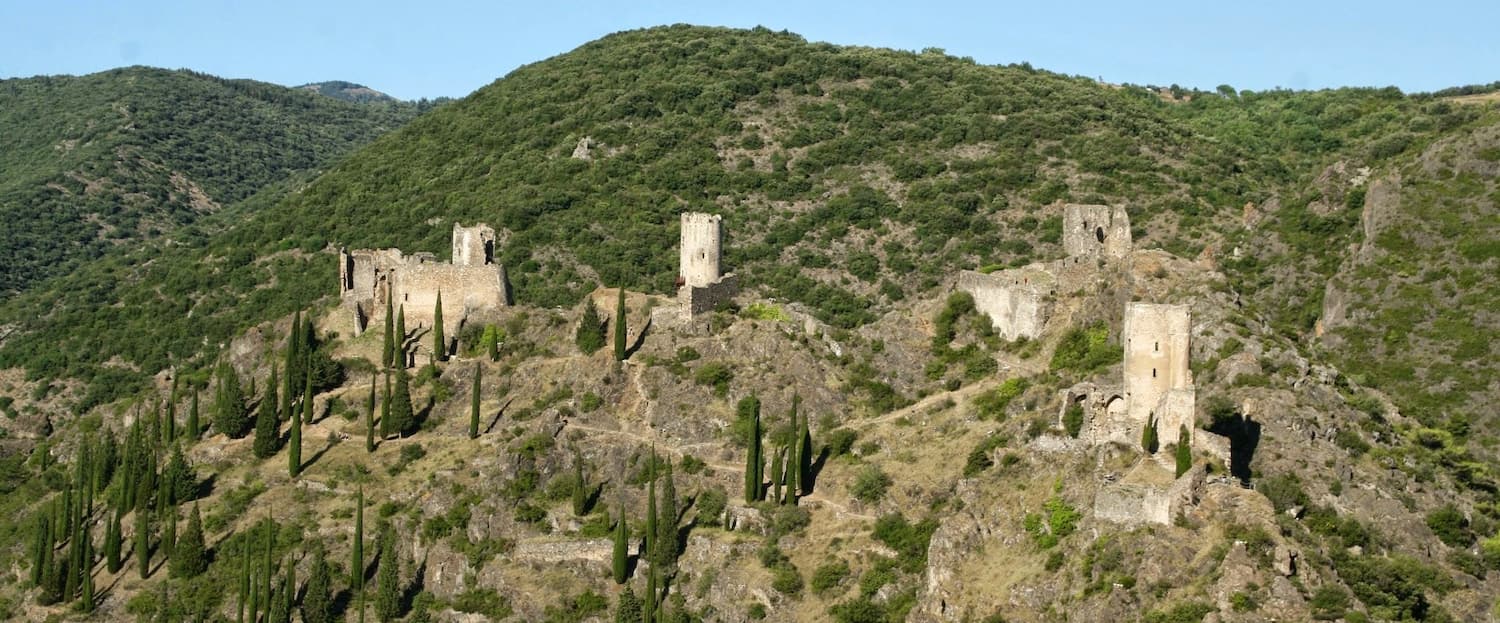
Scenic Hike: Reaching these castles involves a moderate hike along well-marked trails that wind through lush greenery before opening up to panoramic vistas. Each castle has its own unique story and architectural style, making it worth exploring all four during your visit.
Top Tip: Wear comfortable walking shoes as some paths can be steep; bring water and snacks as there are limited facilities near the castles.
2. 🚤 Canal du Midi
Engineering Marvel: Constructed between 1667 and 1681 under Pierre-Paul Riquet’s supervision, this 240-kilometer waterway represents one of the greatest civil engineering achievements of the 17th century. The canal features seventeen locks in Carcassonne alone, with the original stone walls and manually operated wooden gates still functioning as they did centuries ago.
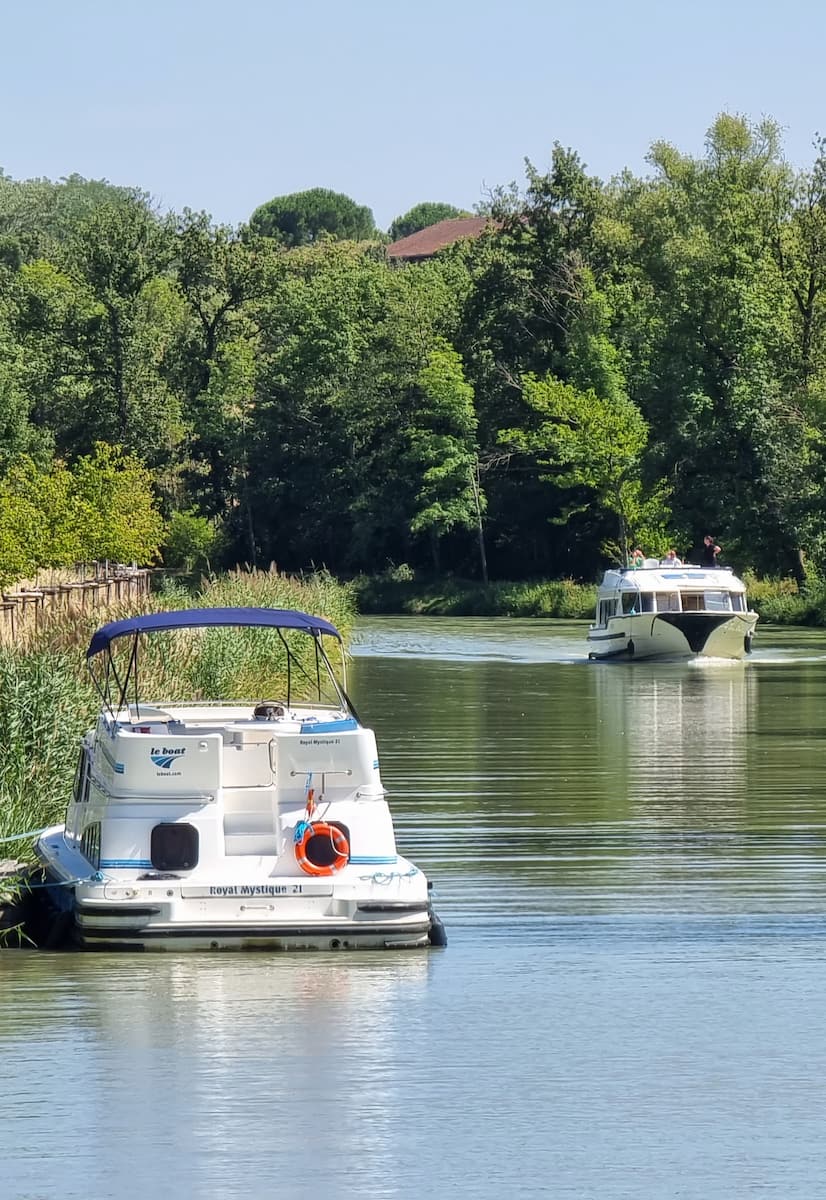
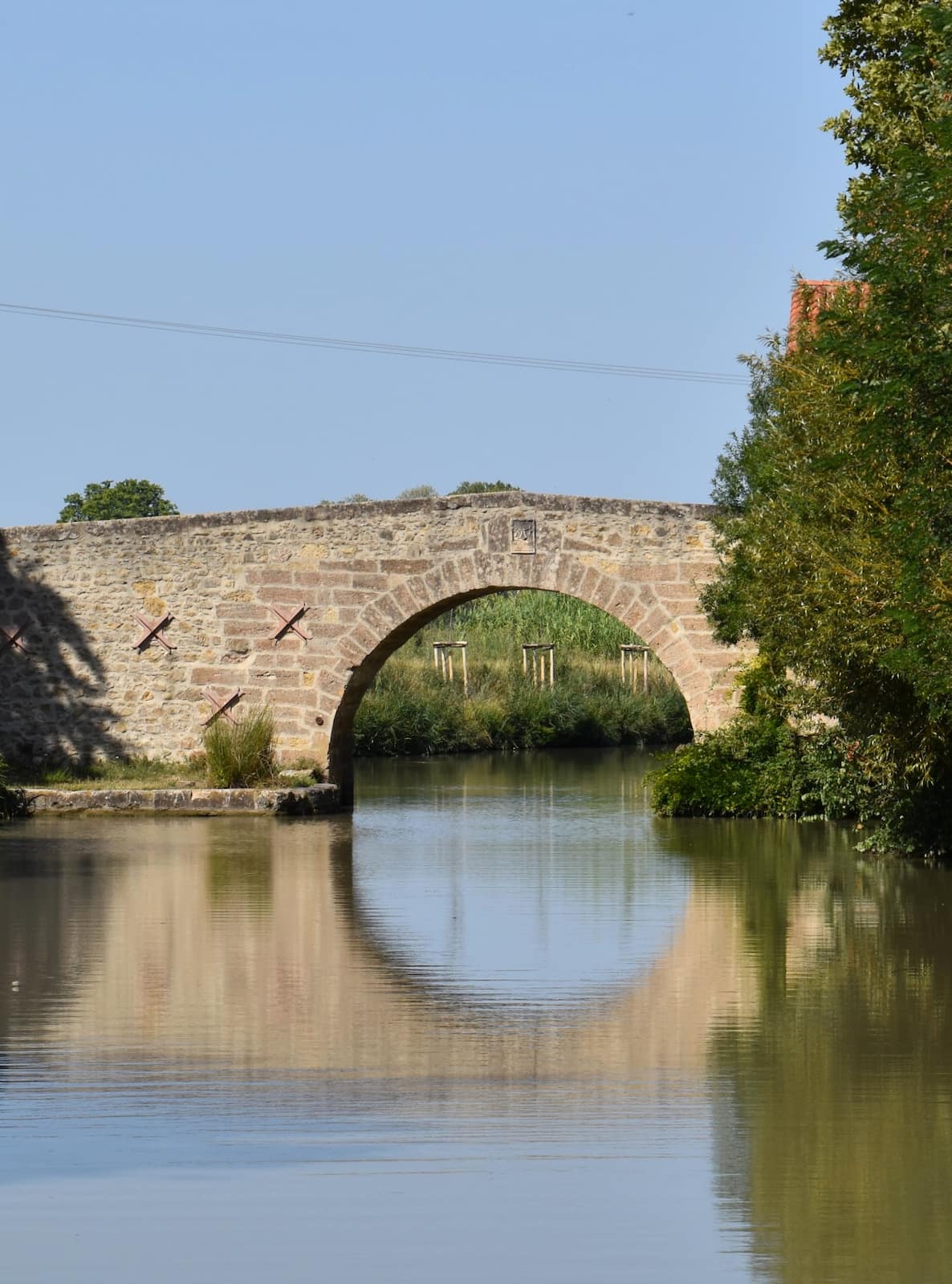
Daily Activities: The towpaths along the canal transform throughout the day – from dawn when local fishermen set up their spots, to dusk when families gather for picnics under centuries-old plane trees. The engineering marvel continues to serve both commercial and pleasure craft, maintaining its original purpose while adapting to modern times.
Time Saver: Rent bikes near the train station rather than walking the entire length.
❓ FAQ
What are the must-see attractions in Carcassonne’s medieval city?
The UNESCO-listed medieval citadel features 52 fairytale towers, impressive Gothic architecture, and 3km of fortified walls. Key attractions include the Château Comtal (Count’s Castle), the Basilica of Saints Nazarius and Celsus with its stunning stained-glass windows, and the cobblestone streets of La Cité. Walking the ancient ramparts offers spectacular views of the Languedoc region and the Aude River.
How long should I spend visiting Carcassonne?
Most travelers find that 1-2 days is sufficient to explore Carcassonne’s main attractions. This allows time to tour the medieval fortress, walk the city walls, visit the Comtal Castle, explore the Bastide Saint-Louis (the lower town), and enjoy local cuisine. For a more relaxed experience, consider staying 2-3 days to include activities like Canal du Midi boat tours and wine tasting.
What’s the best way to explore the medieval city of Carcassonne?
Take a guided tour of the fortified medieval city, which typically lasts 2-3 hours. Audio guides are available at the Château Comtal for detailed historical context. Walking tours often include the 14th-century architecture, the 17th-century fortifications, and explanations of the restoration work by architect Eugène Viollet-le-duc in the 19th century.
What are the best food experiences in Carcassonne?
Carcassonne offers excellent culinary experiences, particularly in La Cité. Must-try local specialties include cassoulet, duck and goose confit, and Languedoc-style snails. The Michelin-star restaurants and traditional bistros around Place Saint-Jean offer authentic regional cuisine. Book in advance, especially during peak tourist season.
When is the best time to visit Carcassonne?
The optimal time to visit is during May-June or September-October when crowds are smaller and weather is pleasant. The Festival de Carcassonne runs from mid-June through August, featuring medieval entertainment and cultural events. July 14th (Bastille Day) offers spectacular fireworks over the medieval city, though this period sees the highest tourist numbers.
What are some unique experiences beyond the medieval city?
Explore the Bastide Saint-Louis across the Pont Vieux (old bridge), take a boat tour on the Canal du Midi (a UNESCO World Heritage site connecting the Atlantic Ocean to the Mediterranean Sea), visit the school museum showcasing France between the 1880s and 1960s, or tour the surrounding wine region and Cathar country with its medieval castles.
